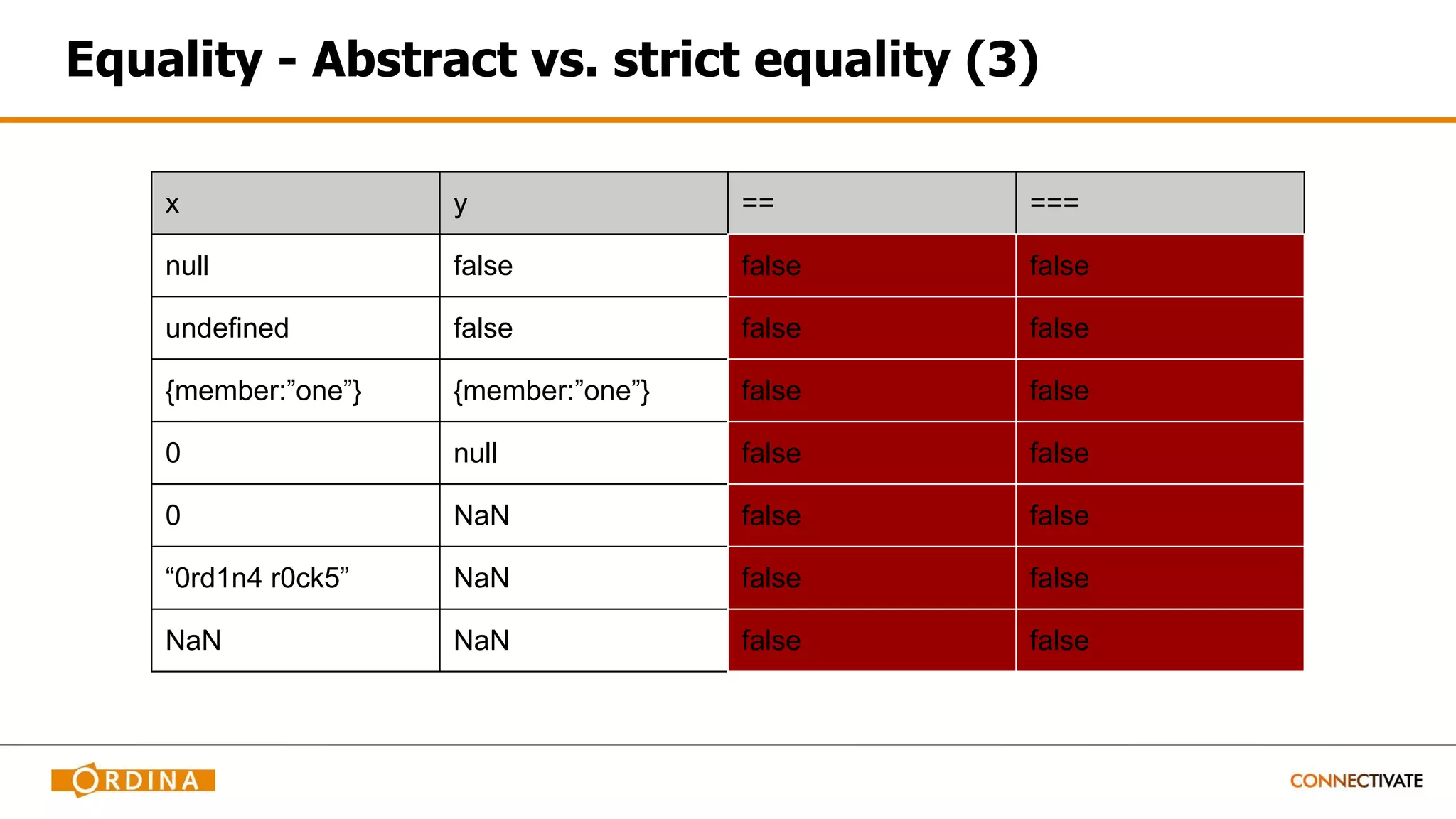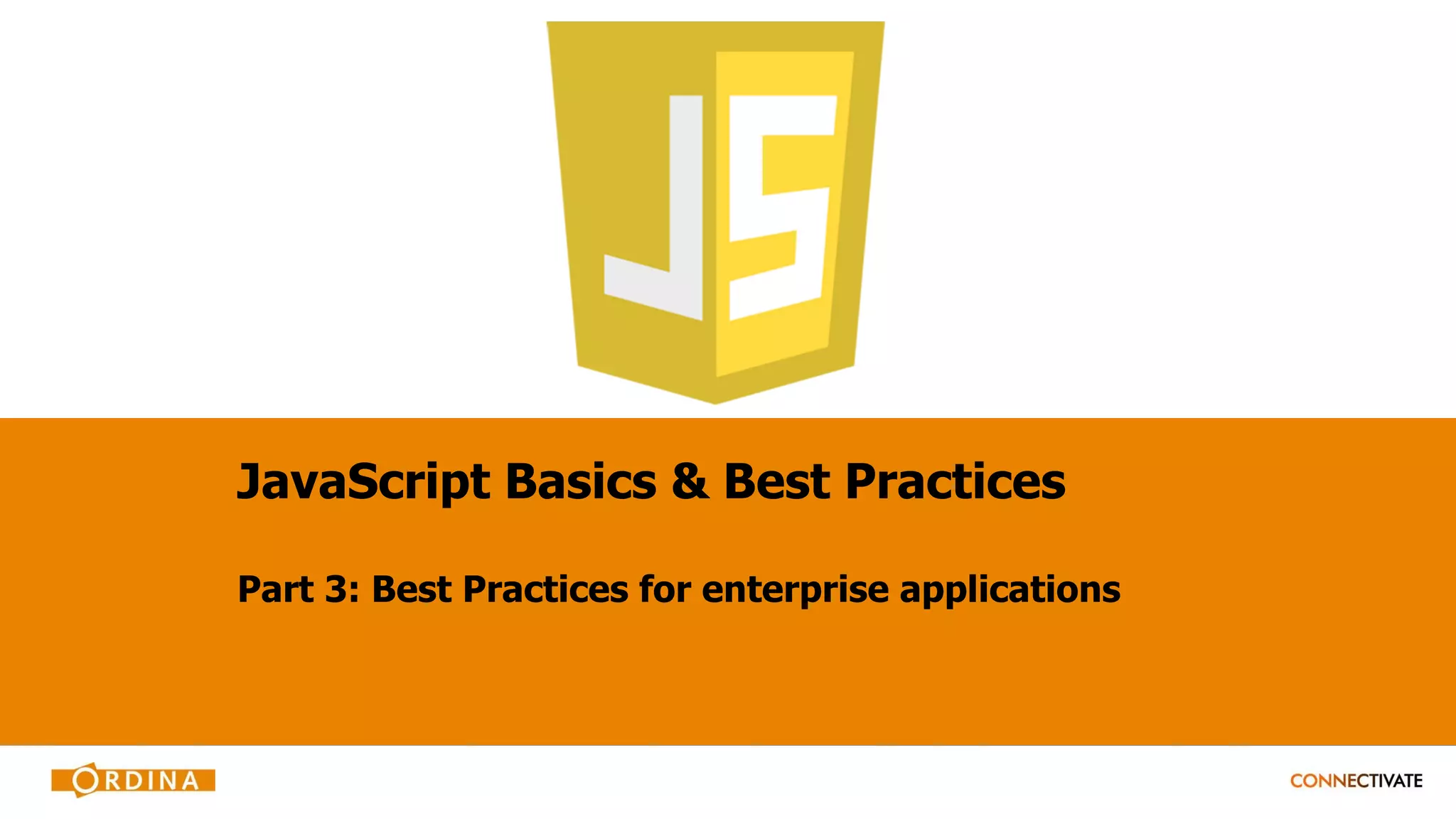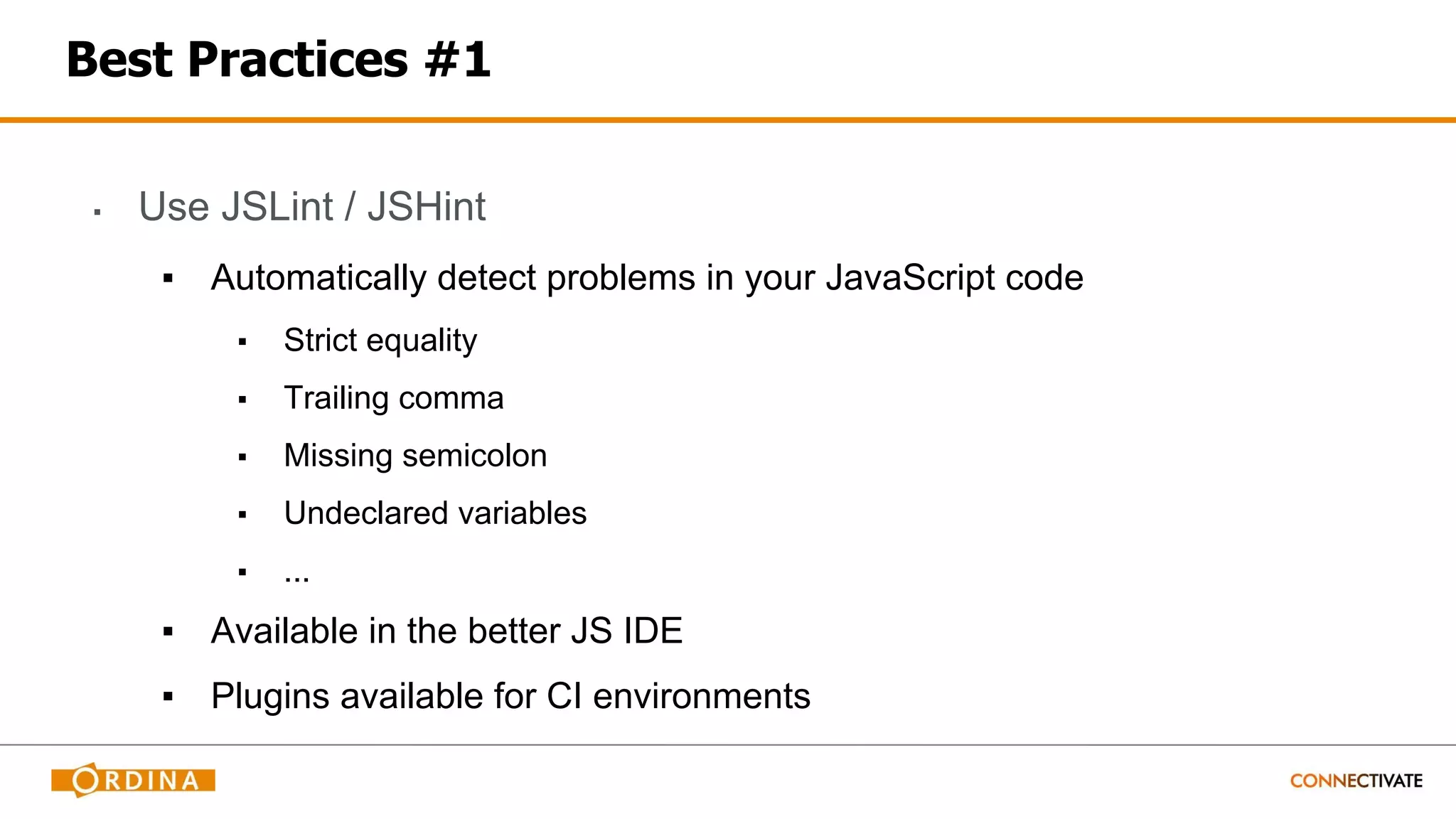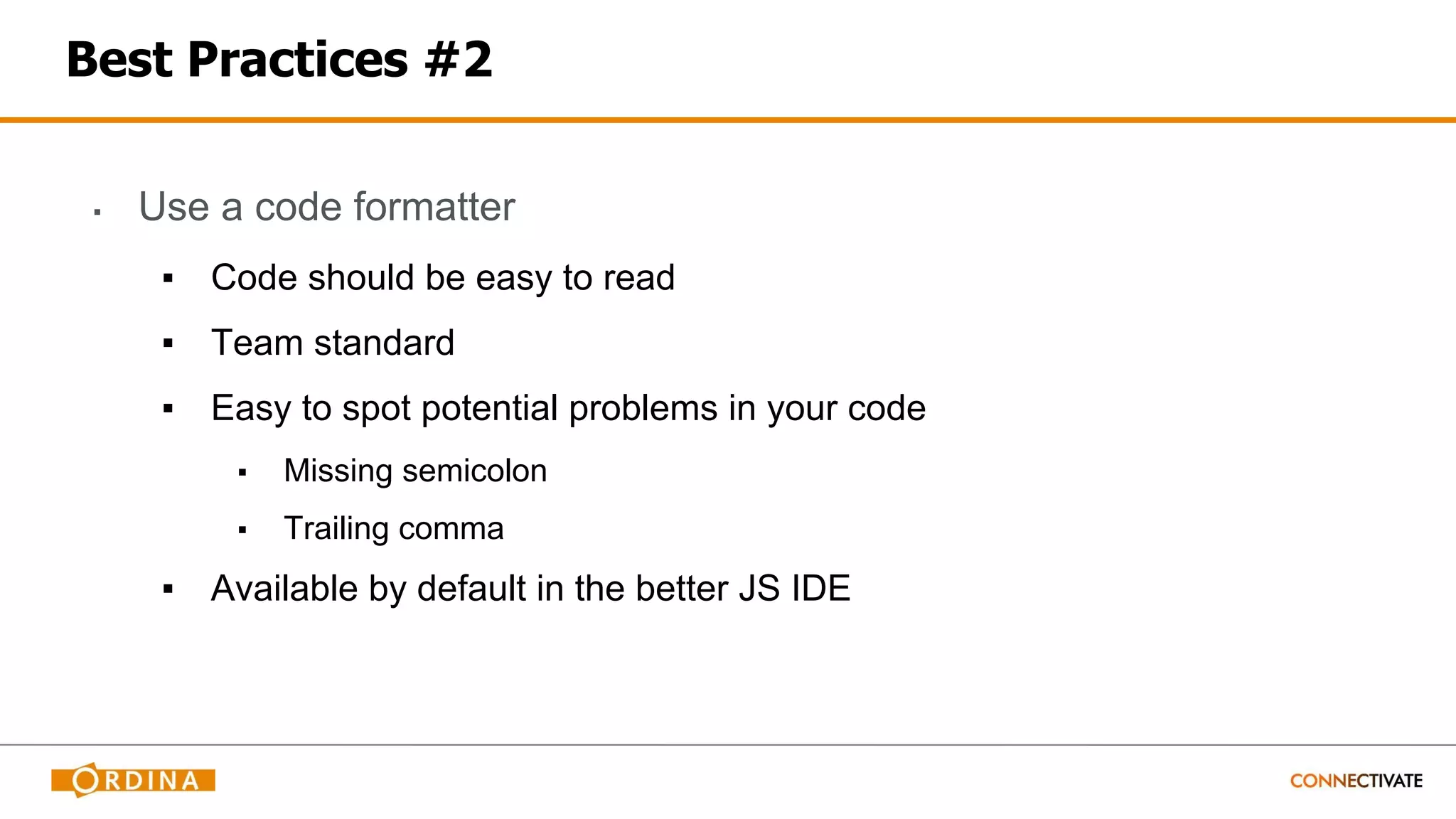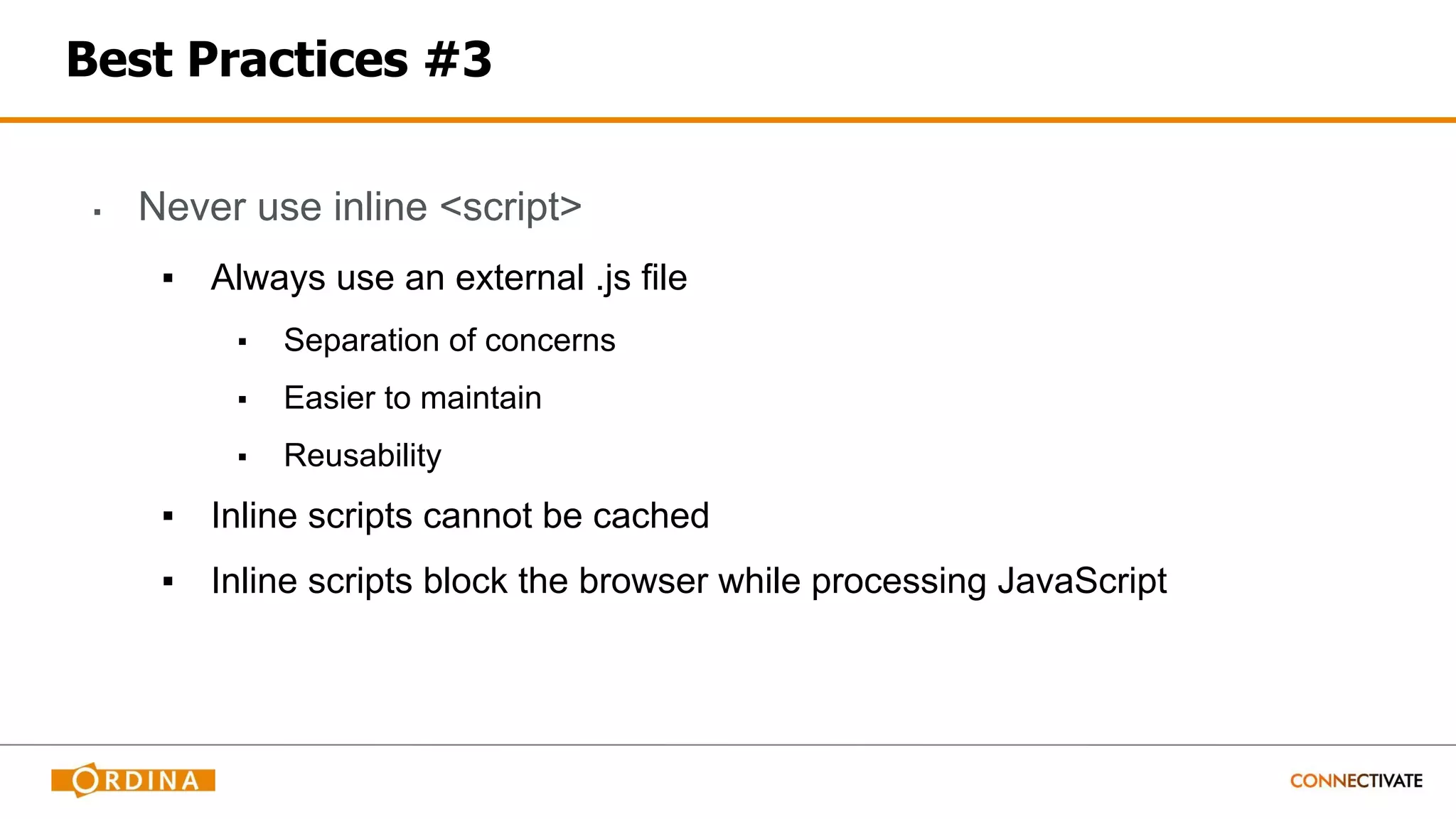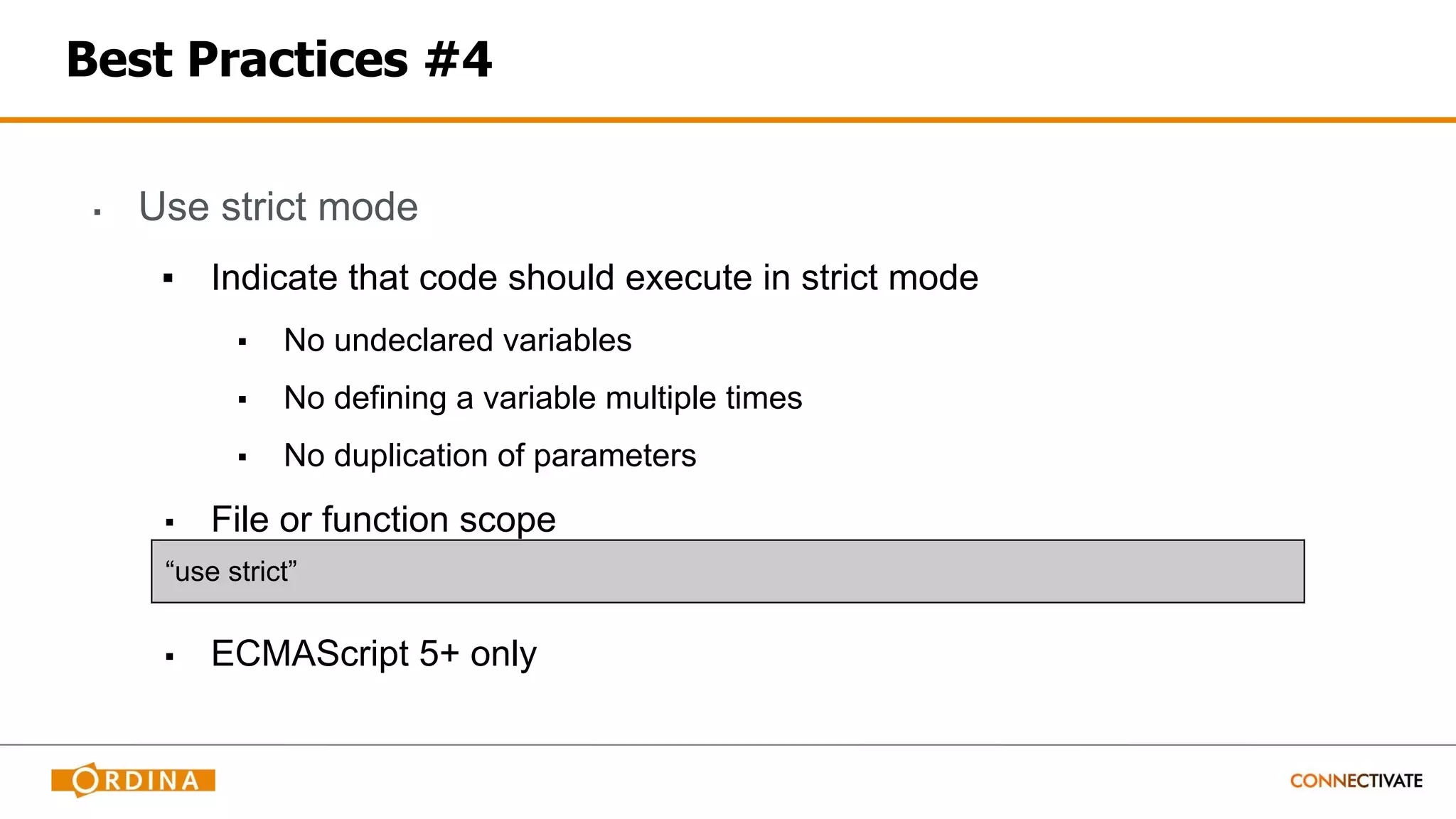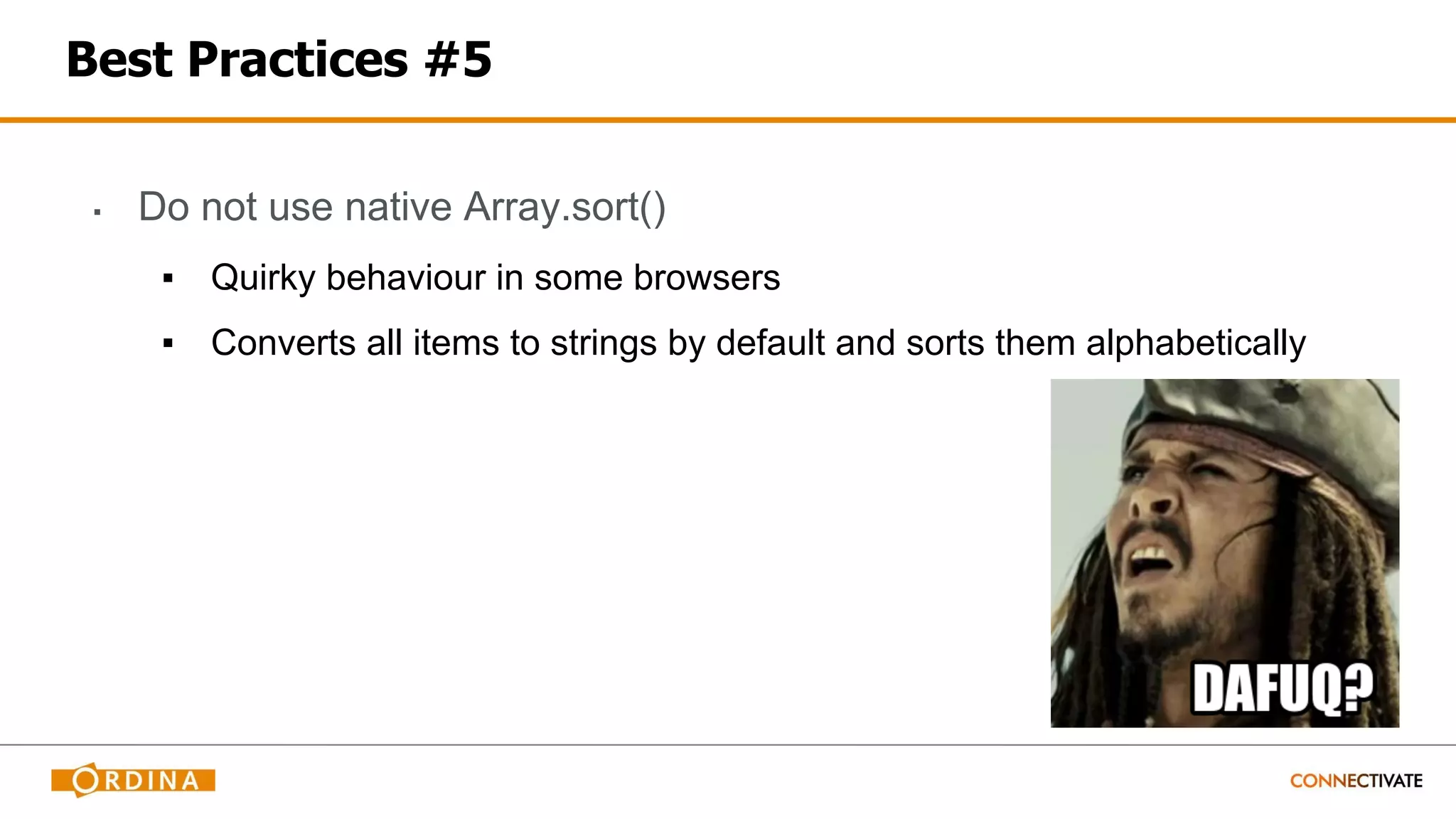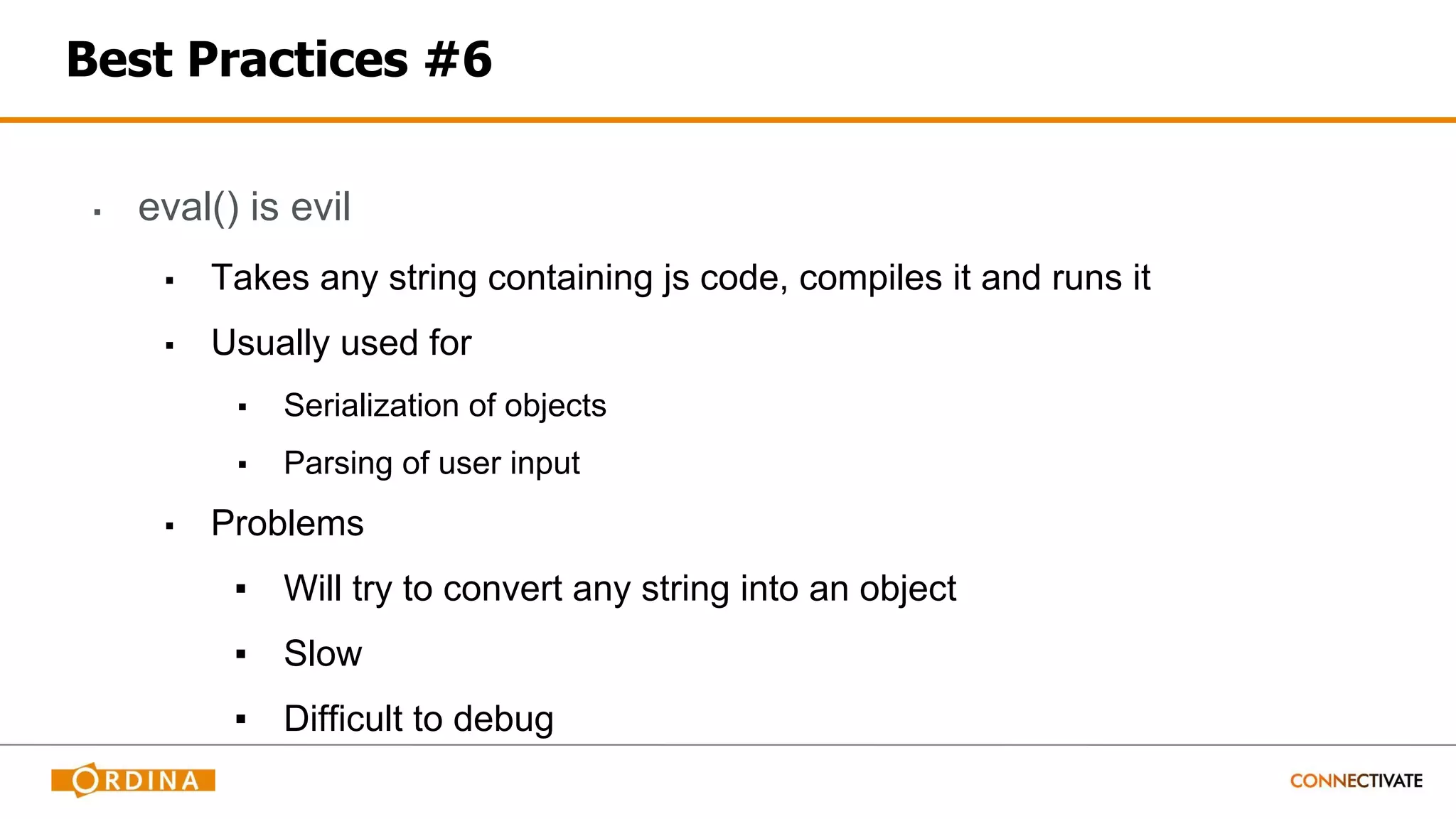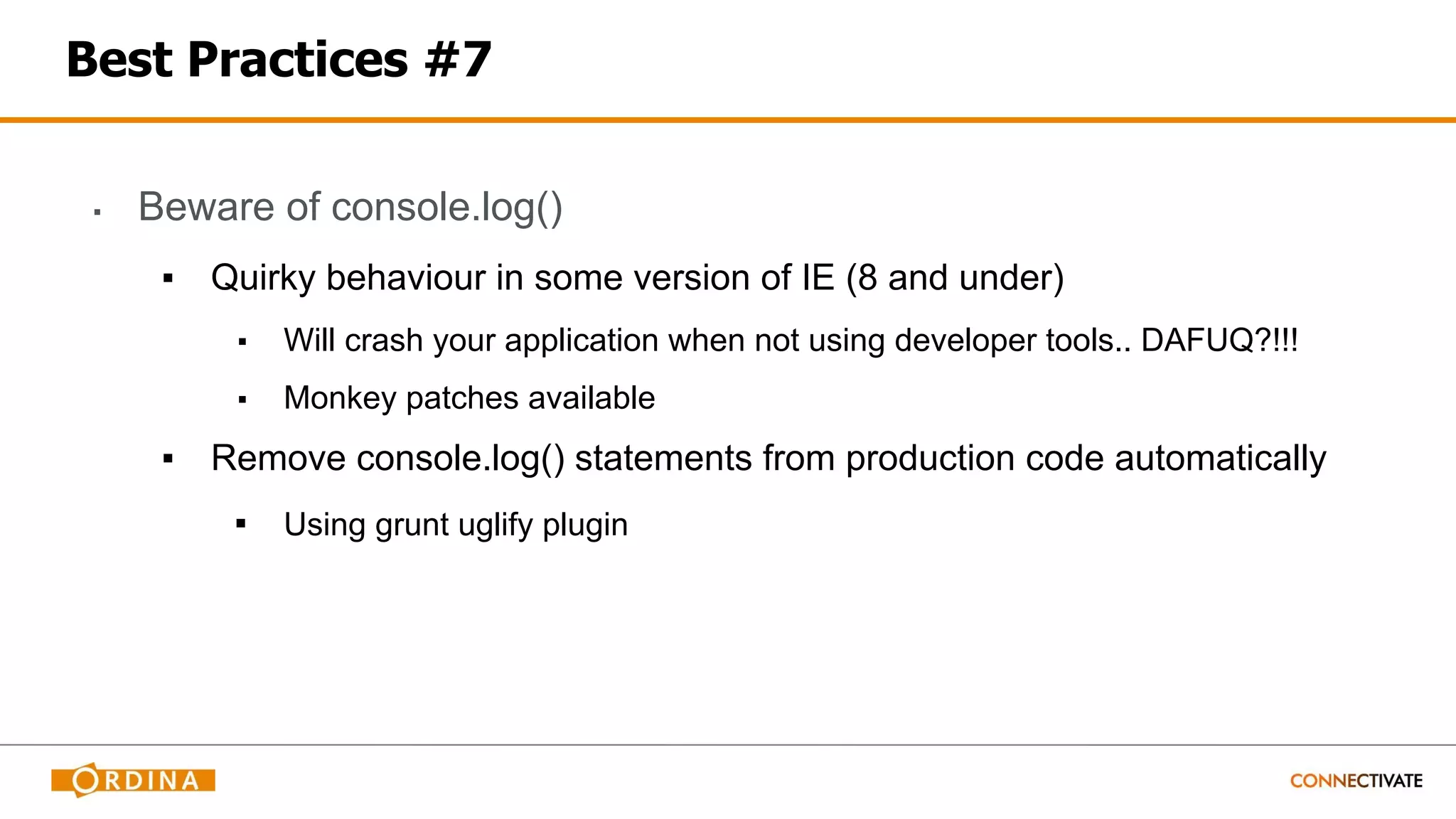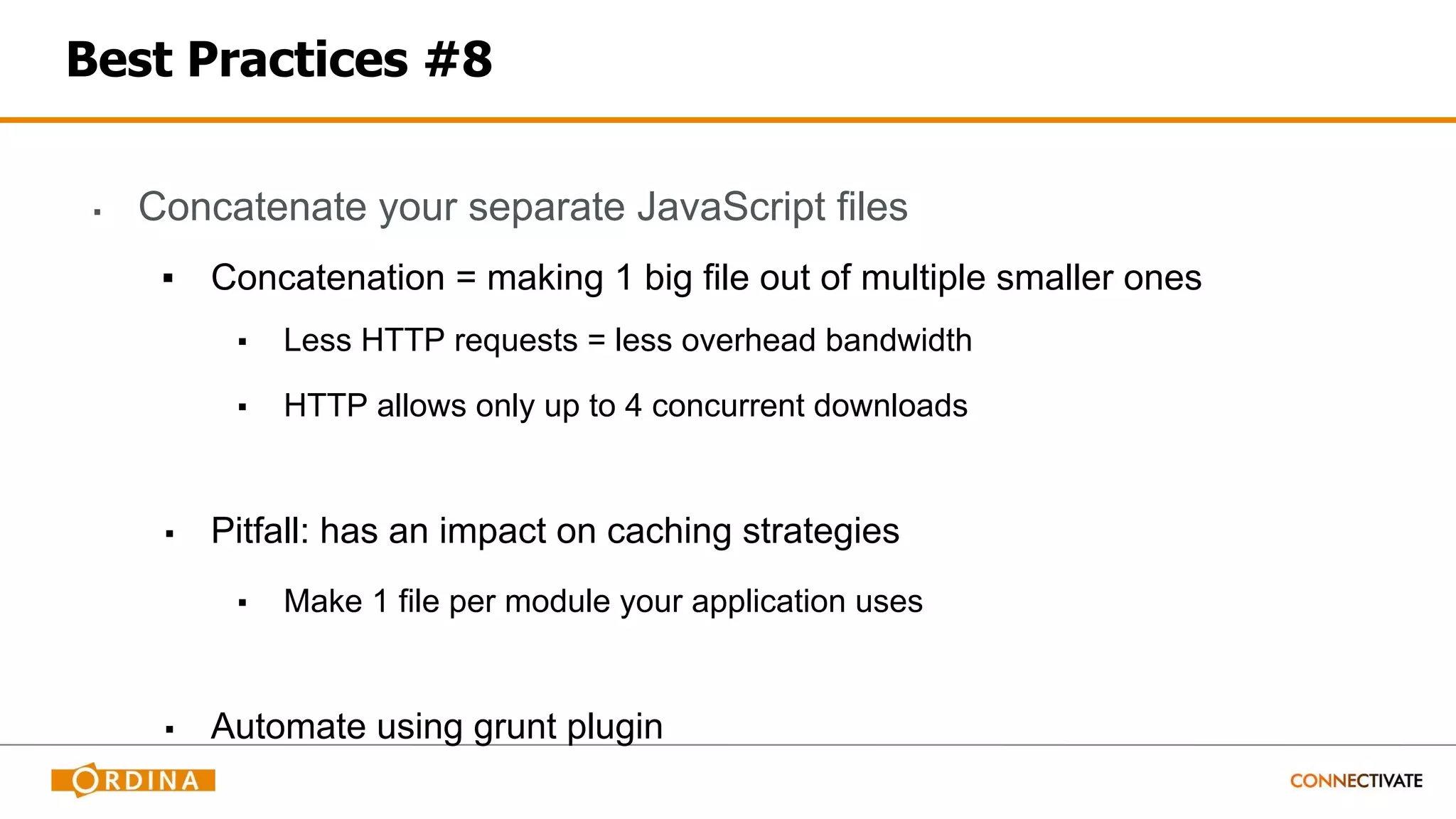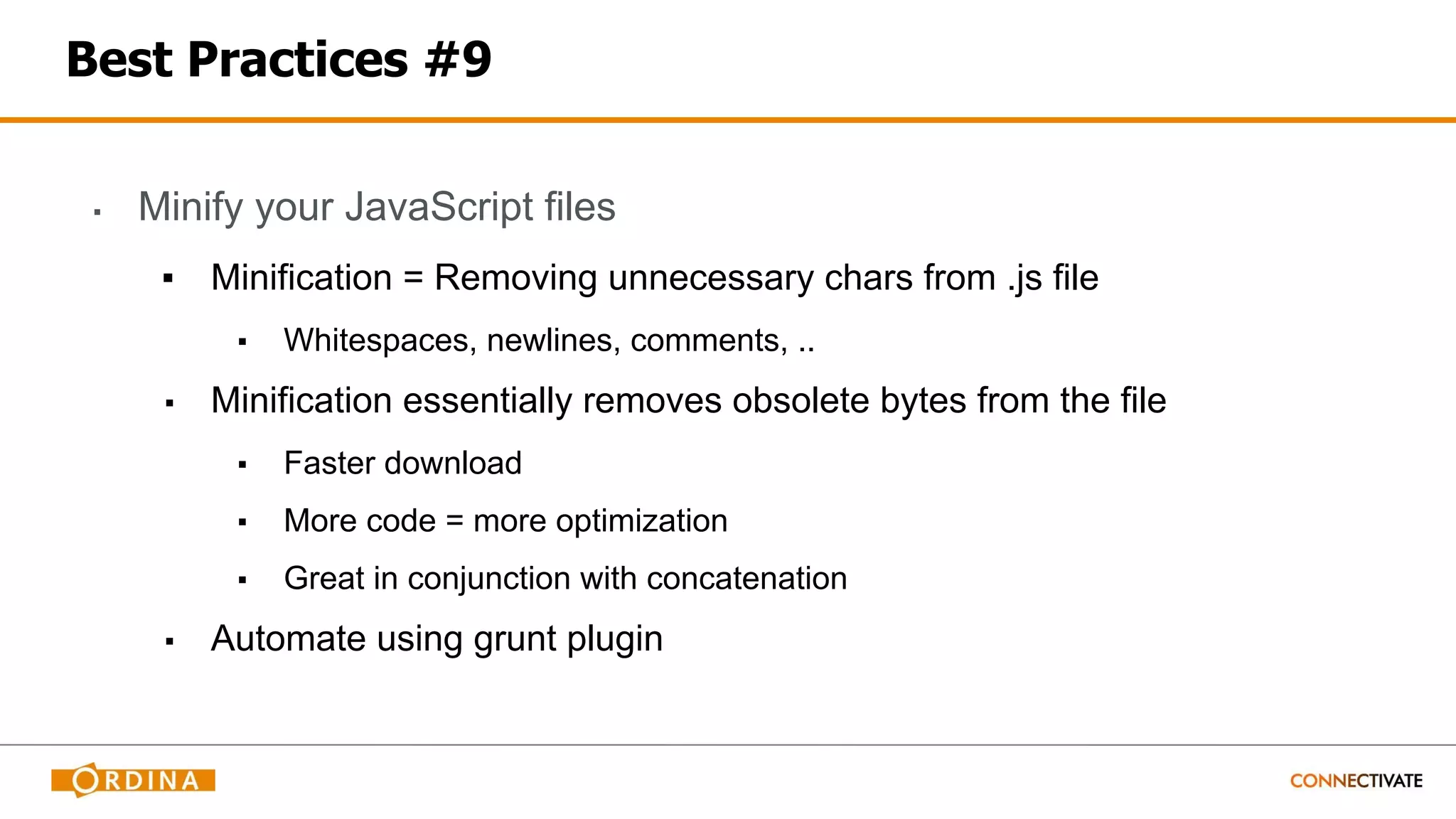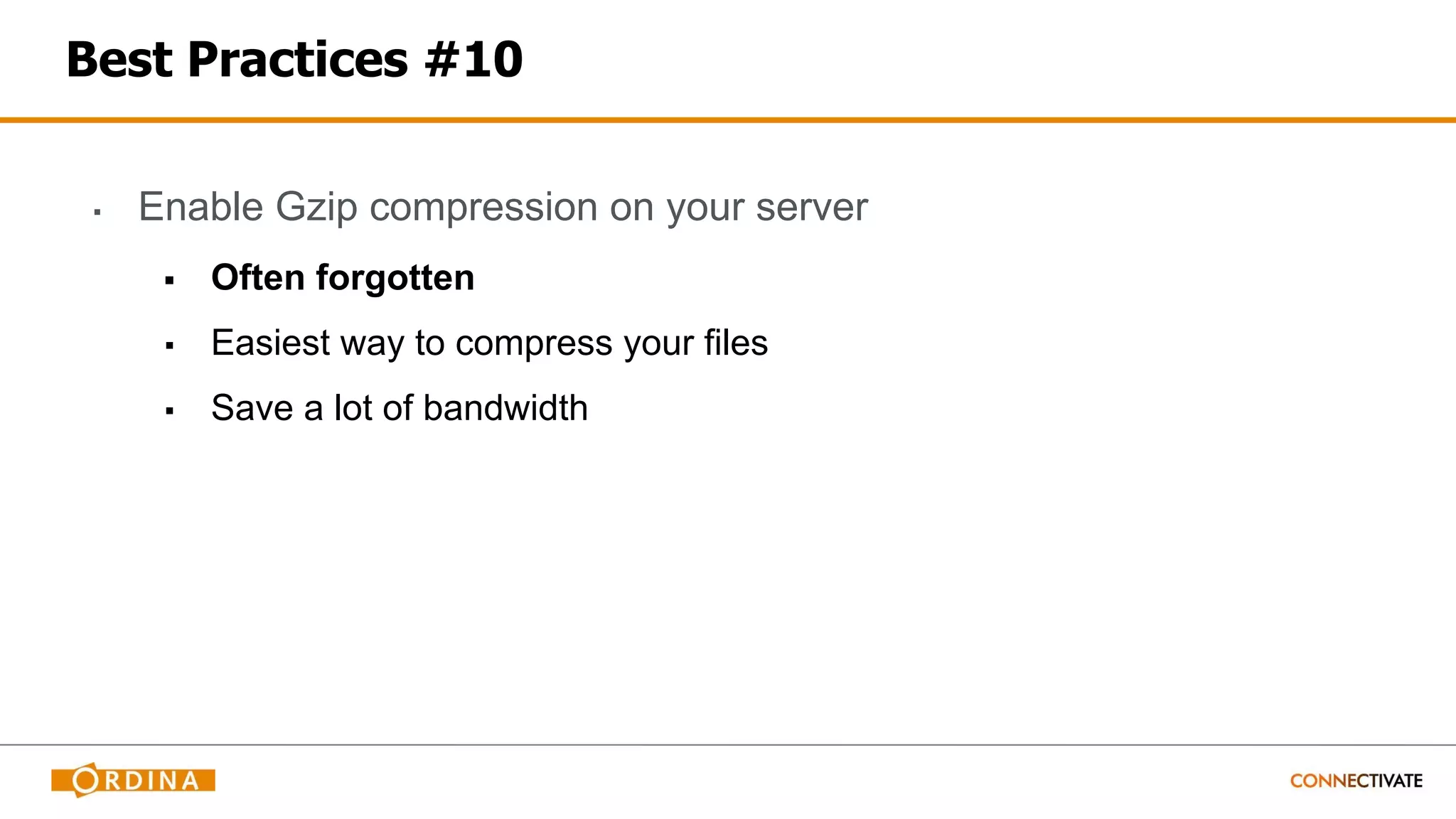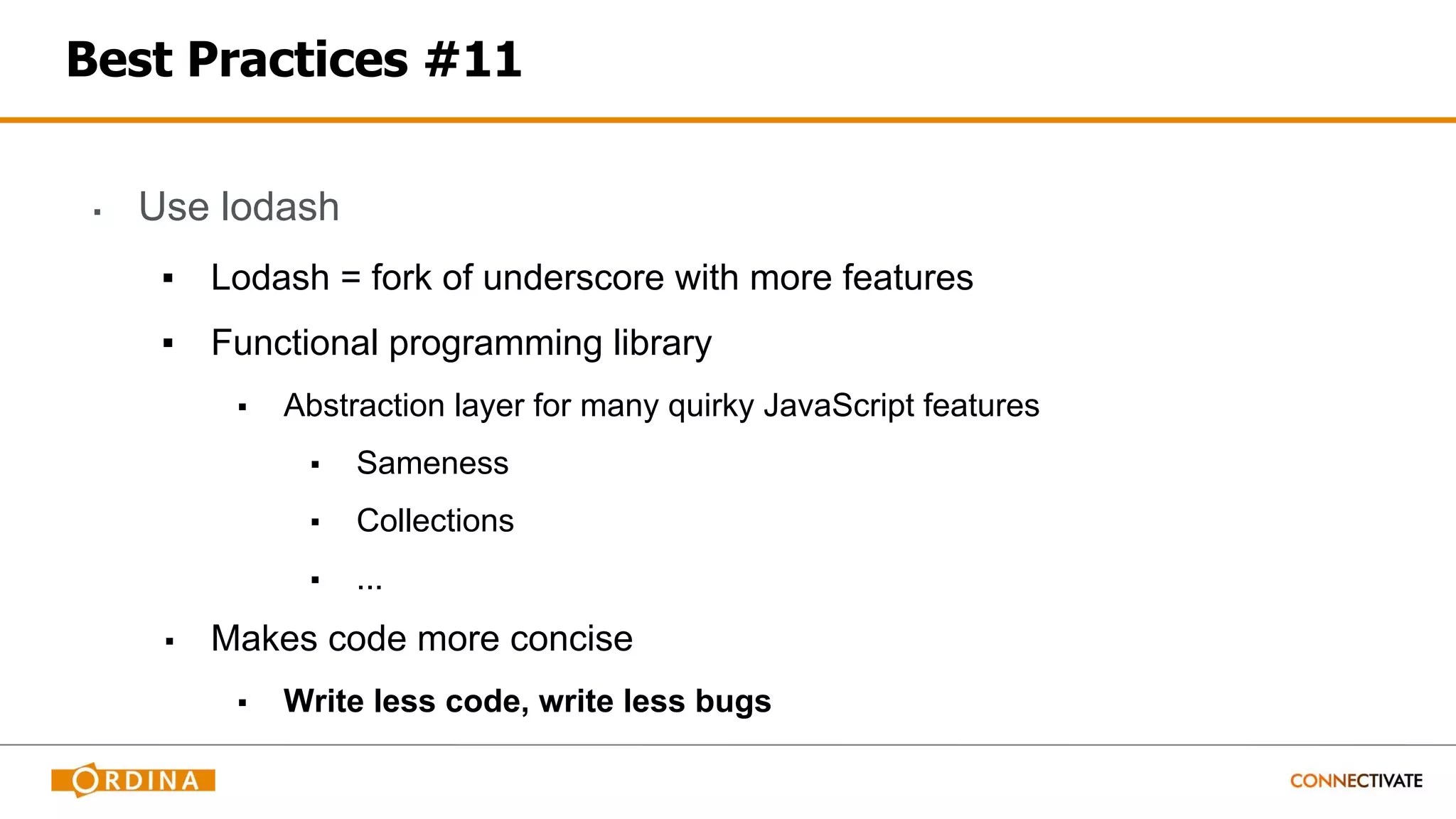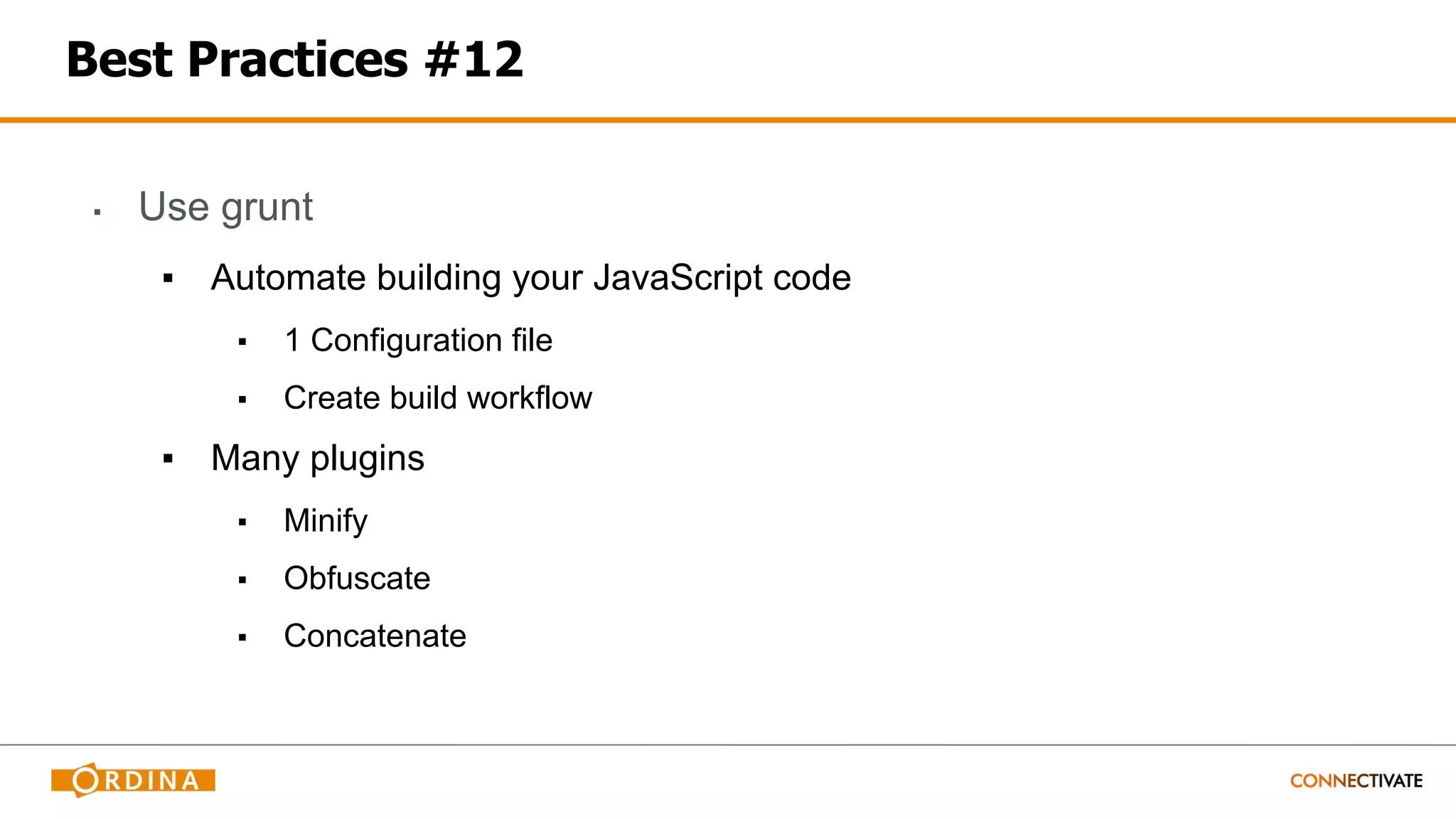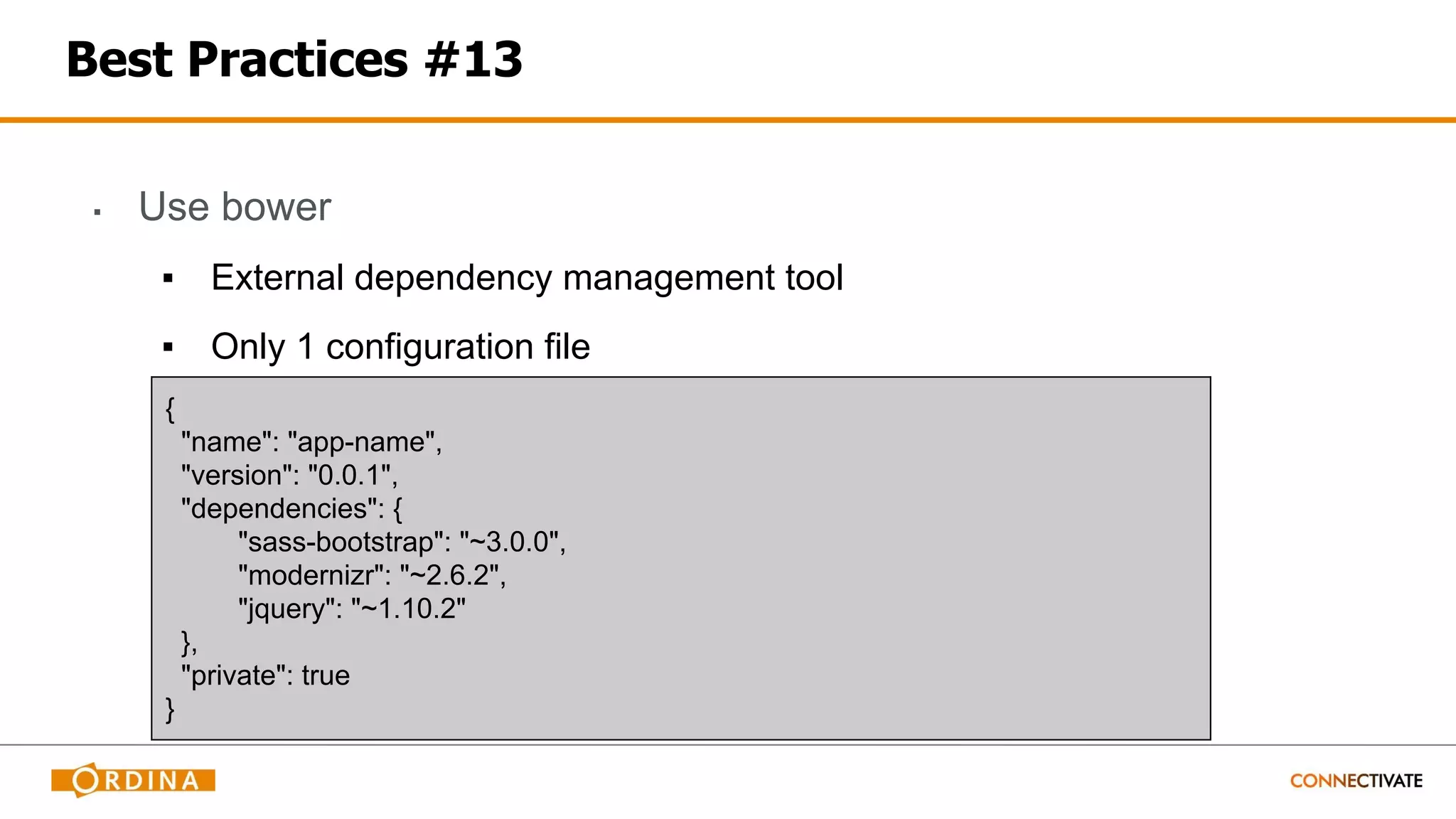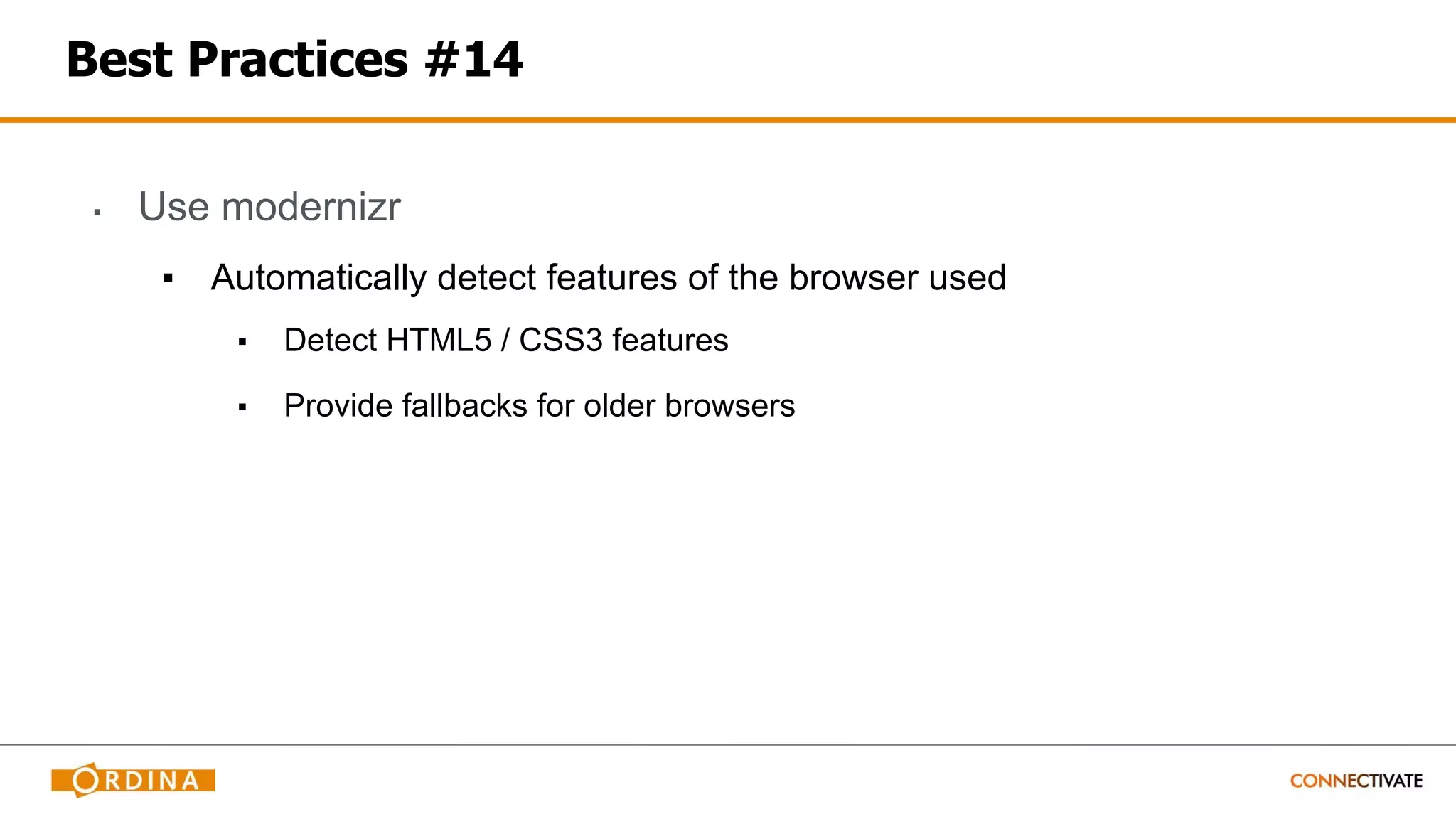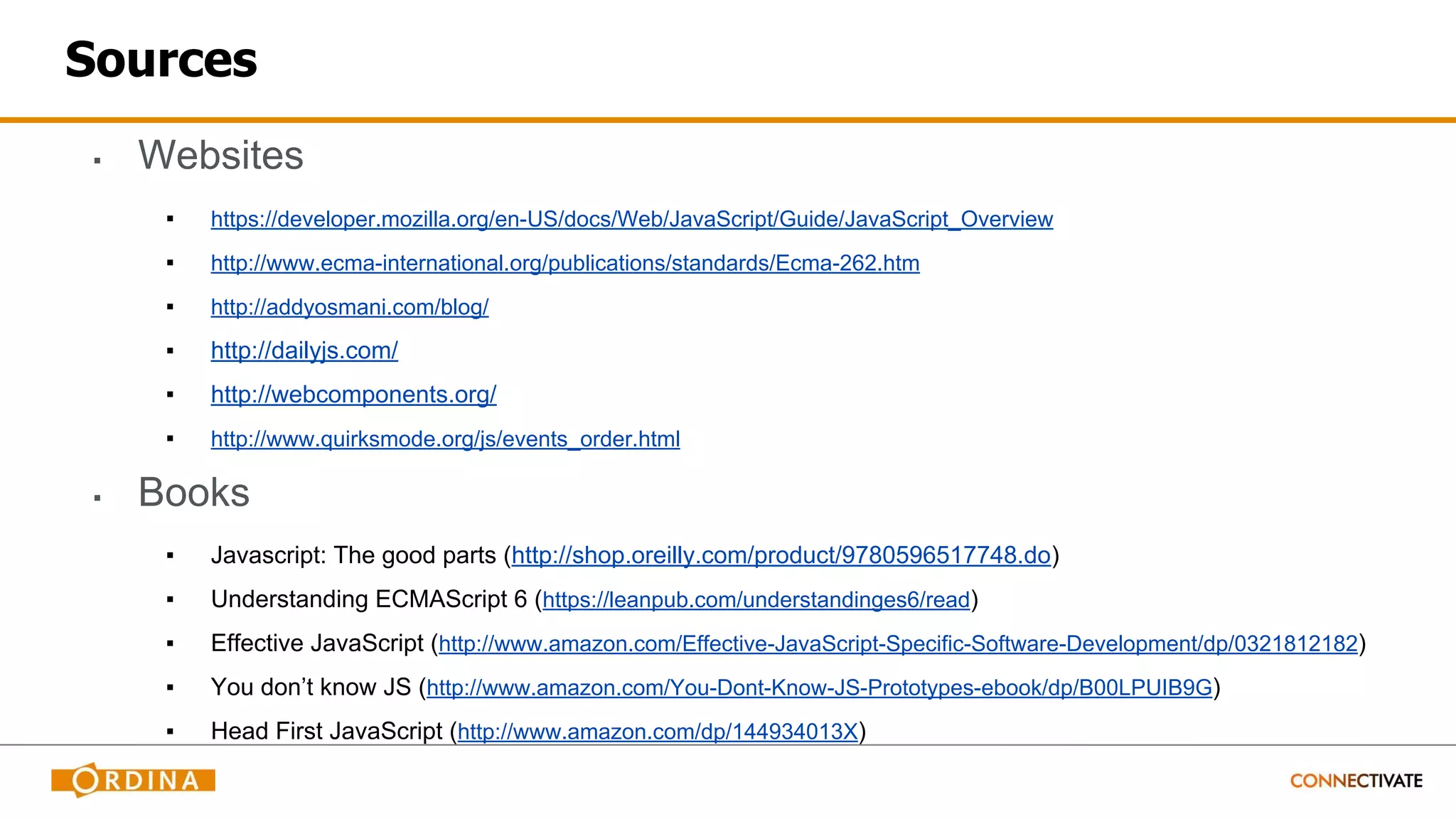This document provides an overview and introduction to JavaScript basics and best practices. It covers what JavaScript is, how engines work, language features, and future developments like ES6. The basics section discusses types, variables, expressions, statements, functions, objects, and prototypical inheritance. The best practices section focuses on techniques for enterprise applications. The document is intended to help front-end developers learn JavaScript fundamentals.


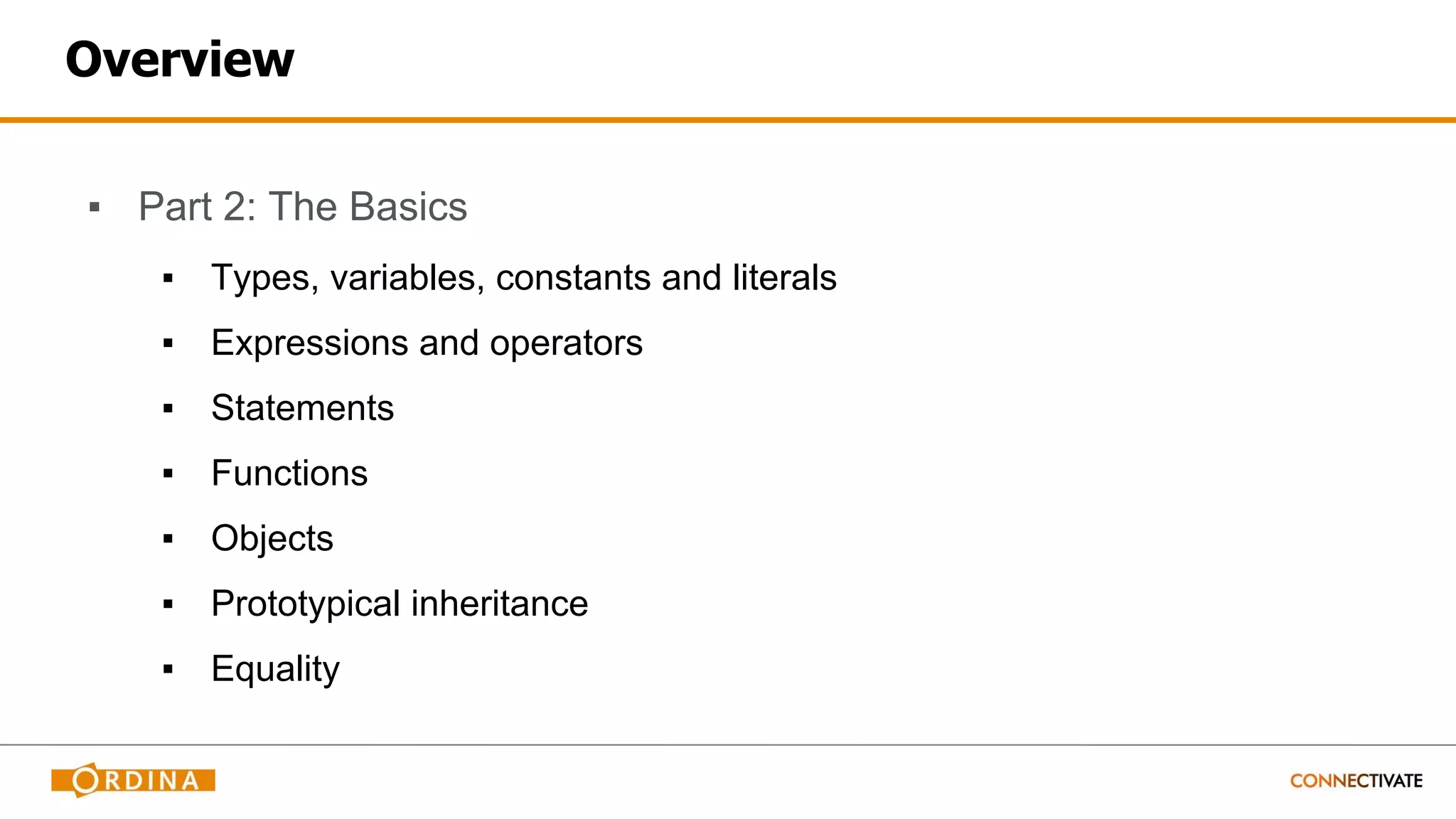
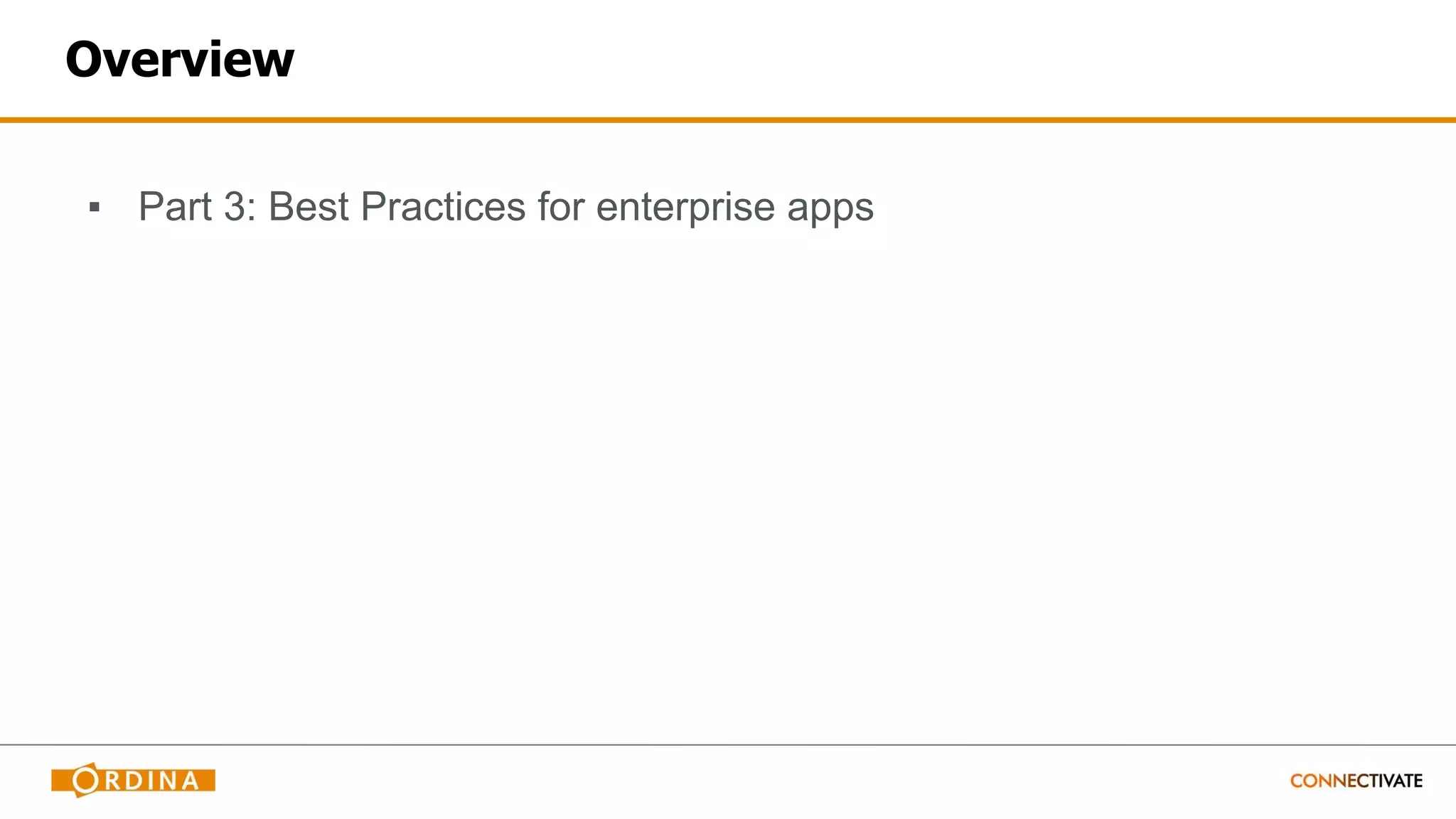
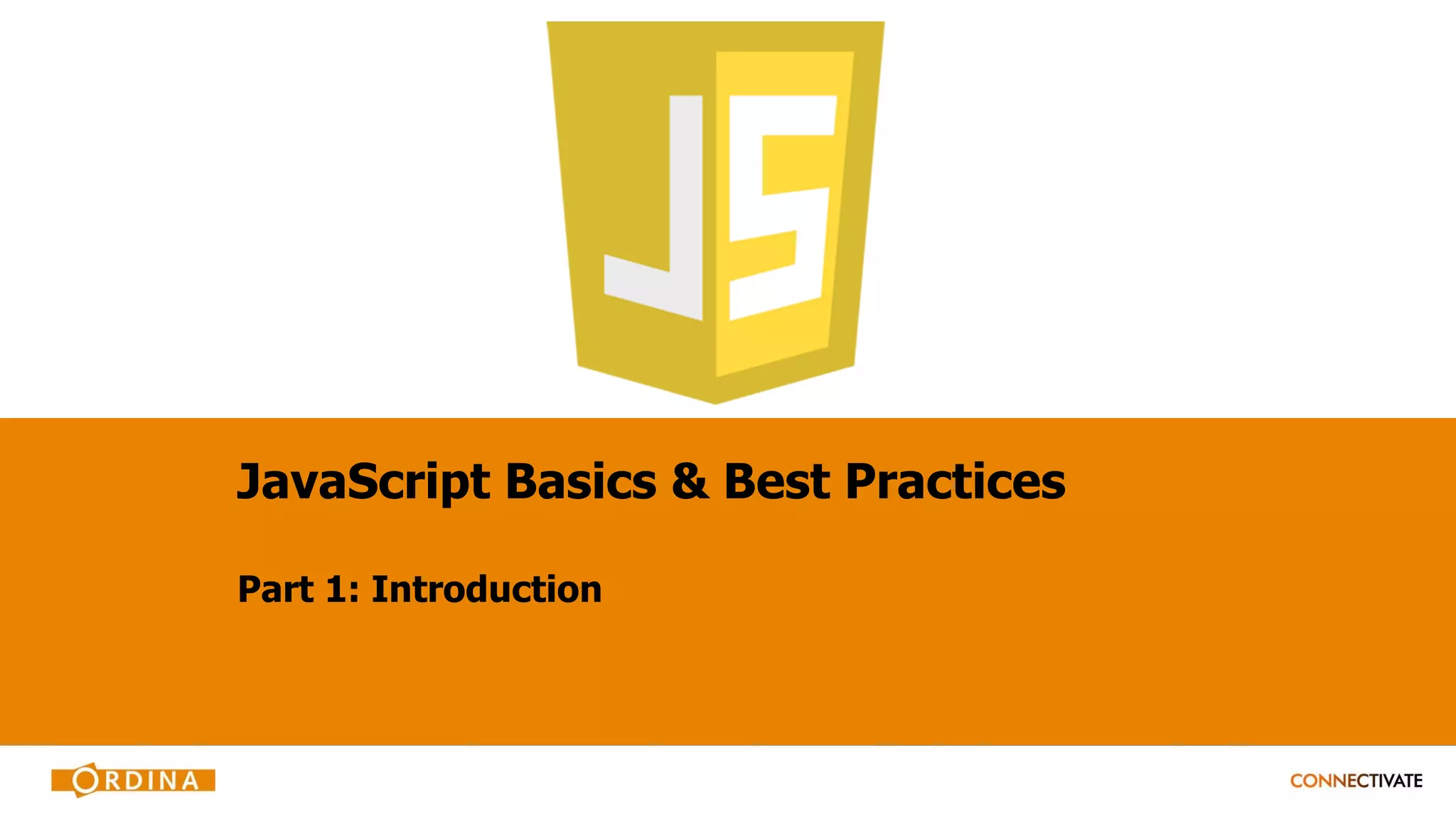
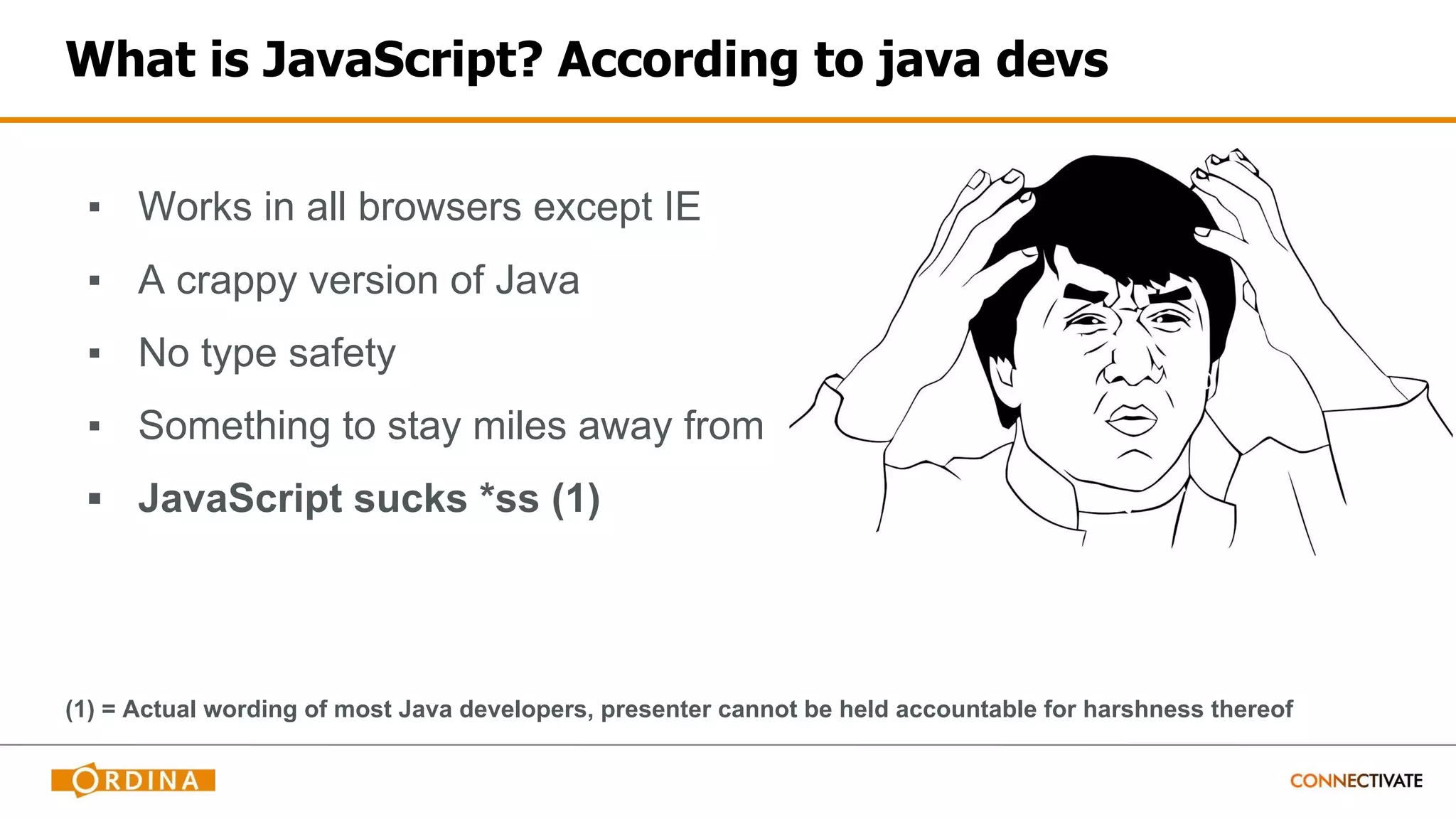
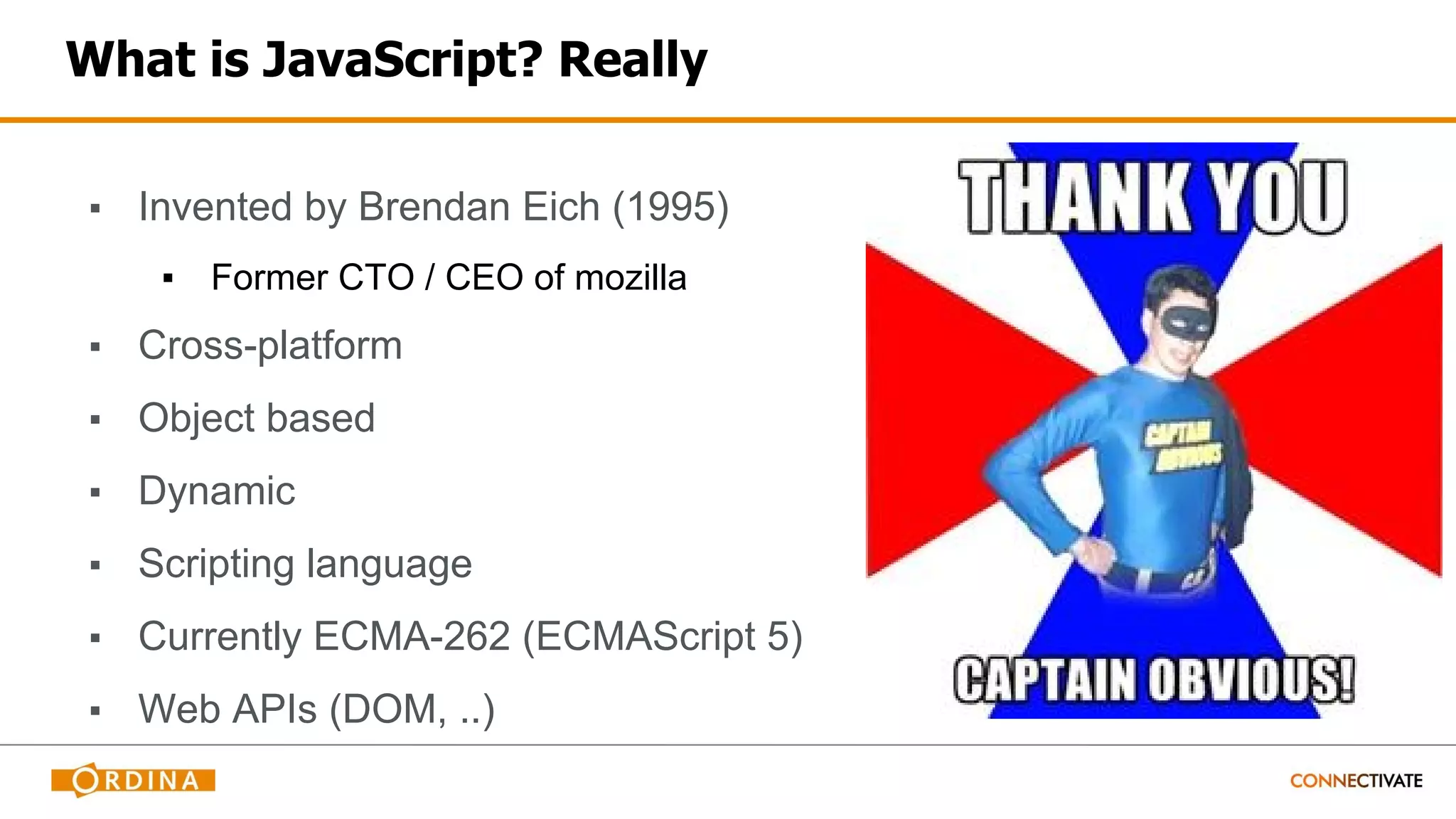
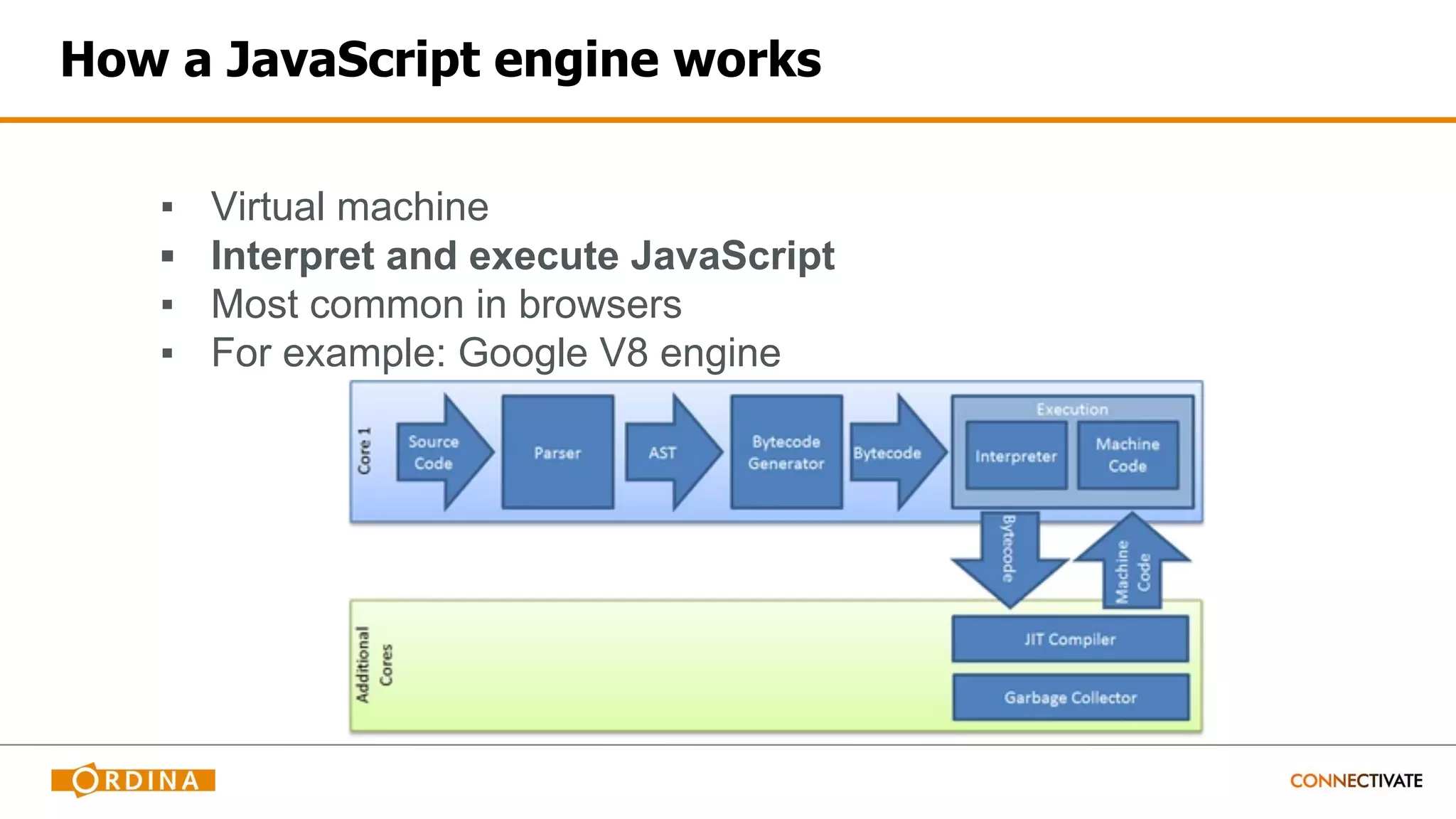
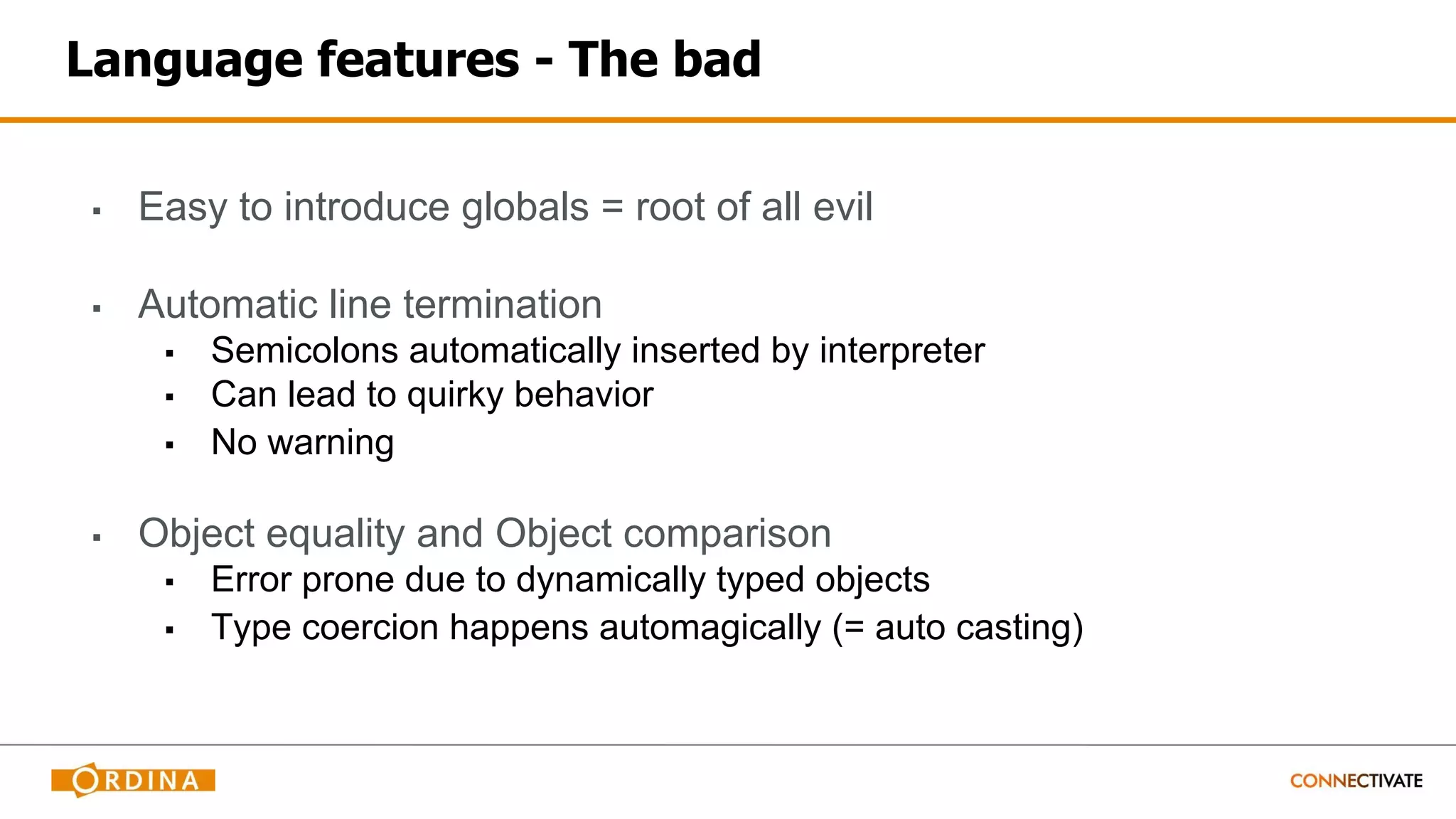
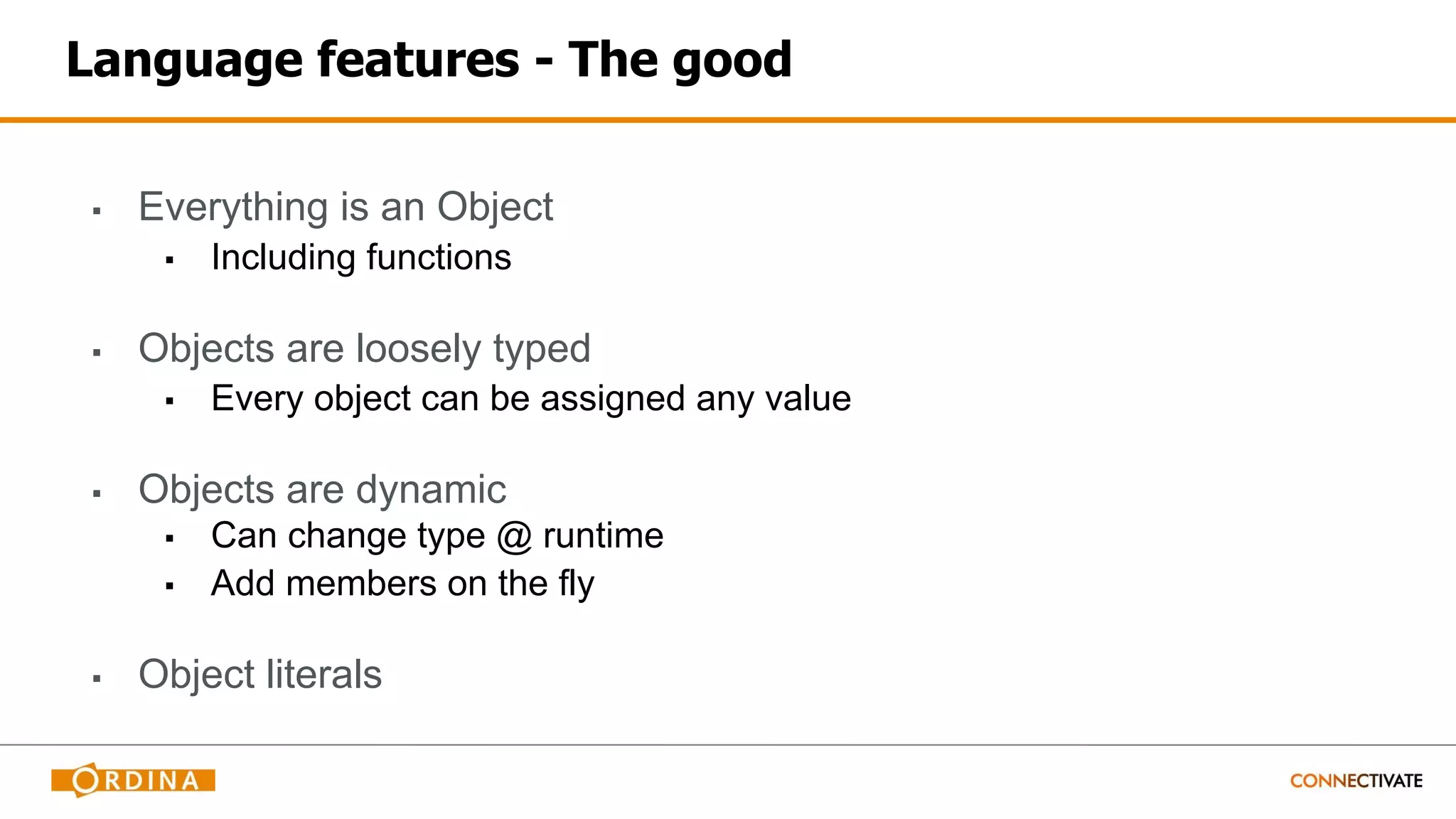
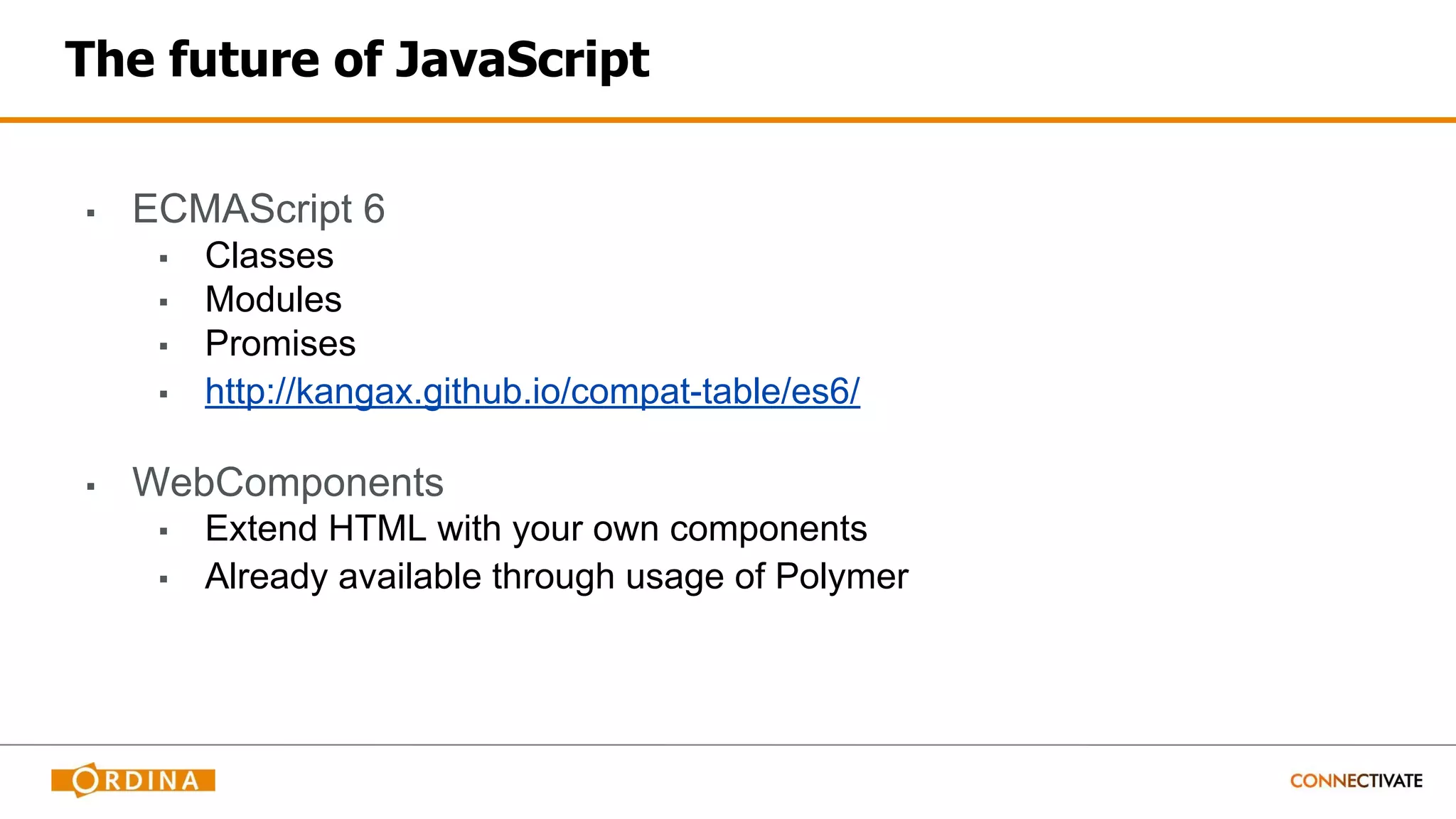
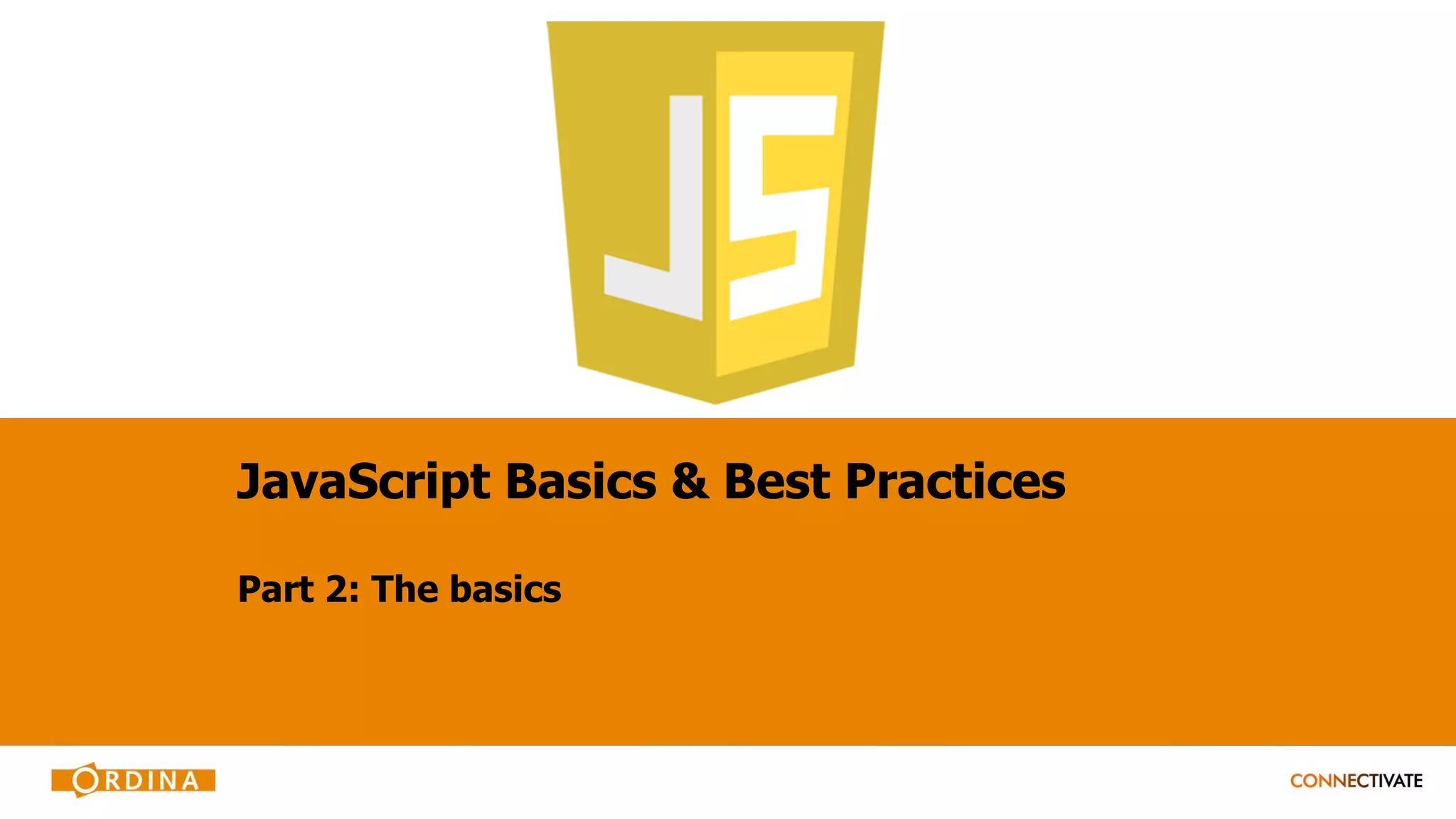
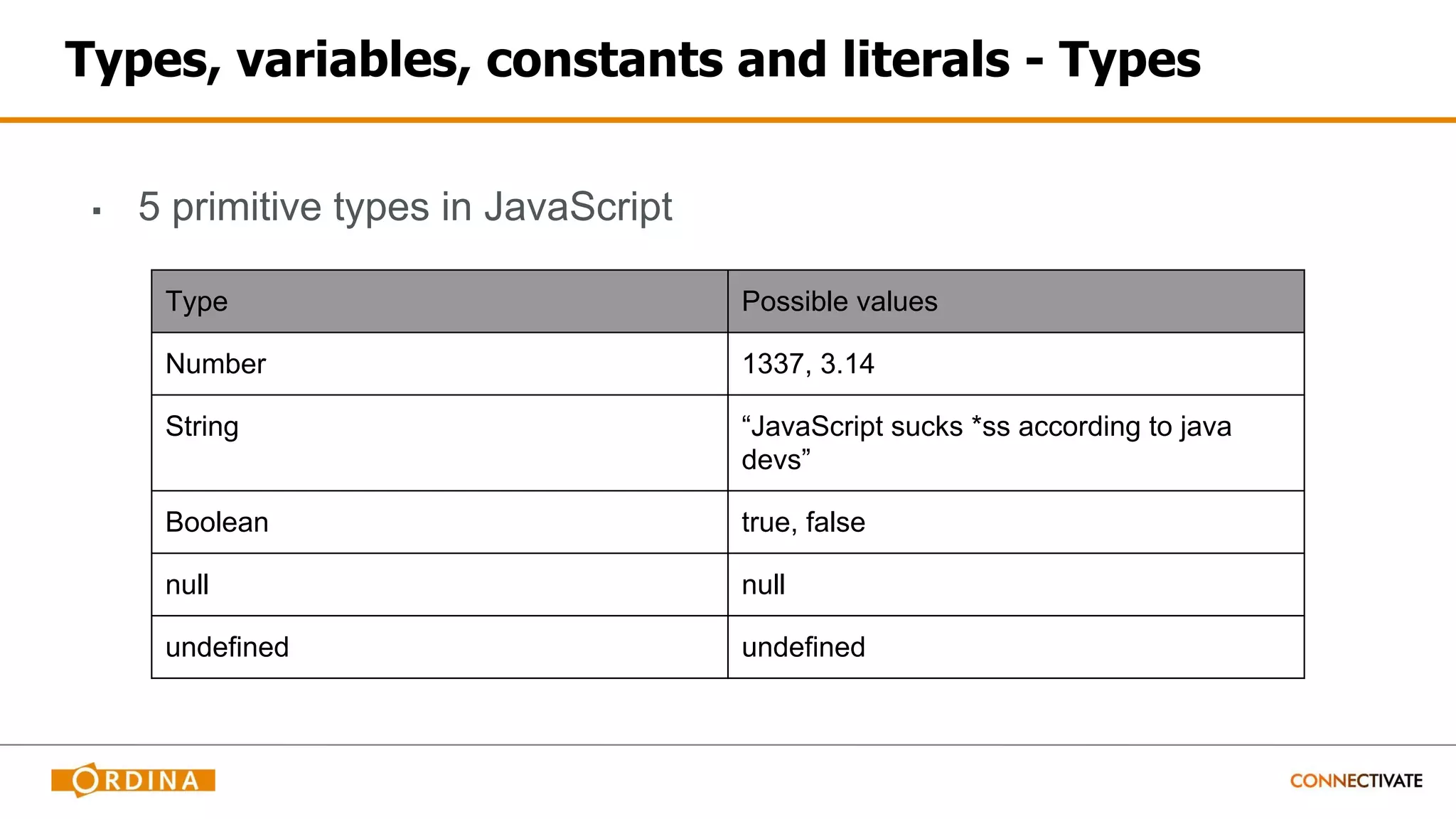
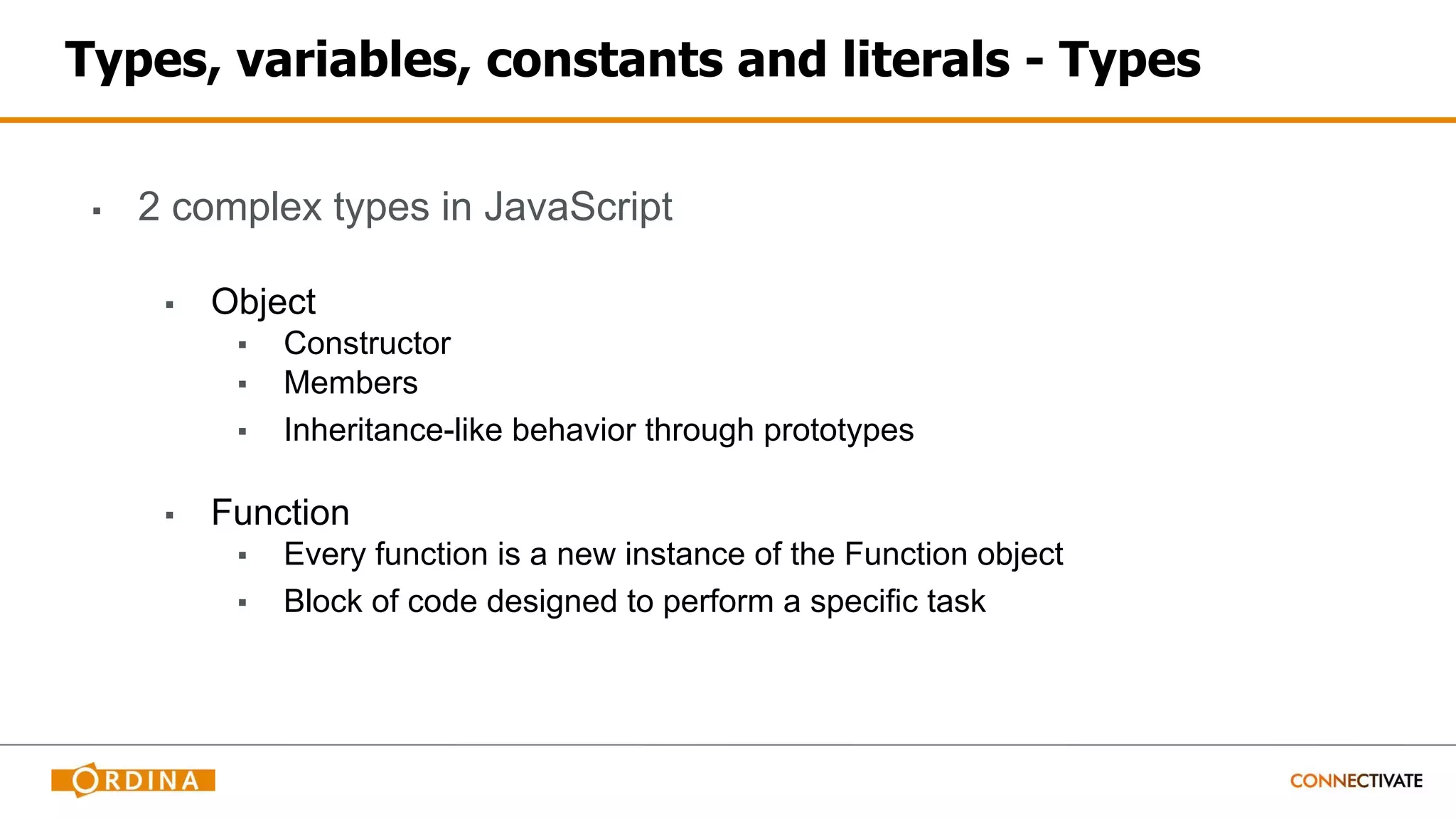
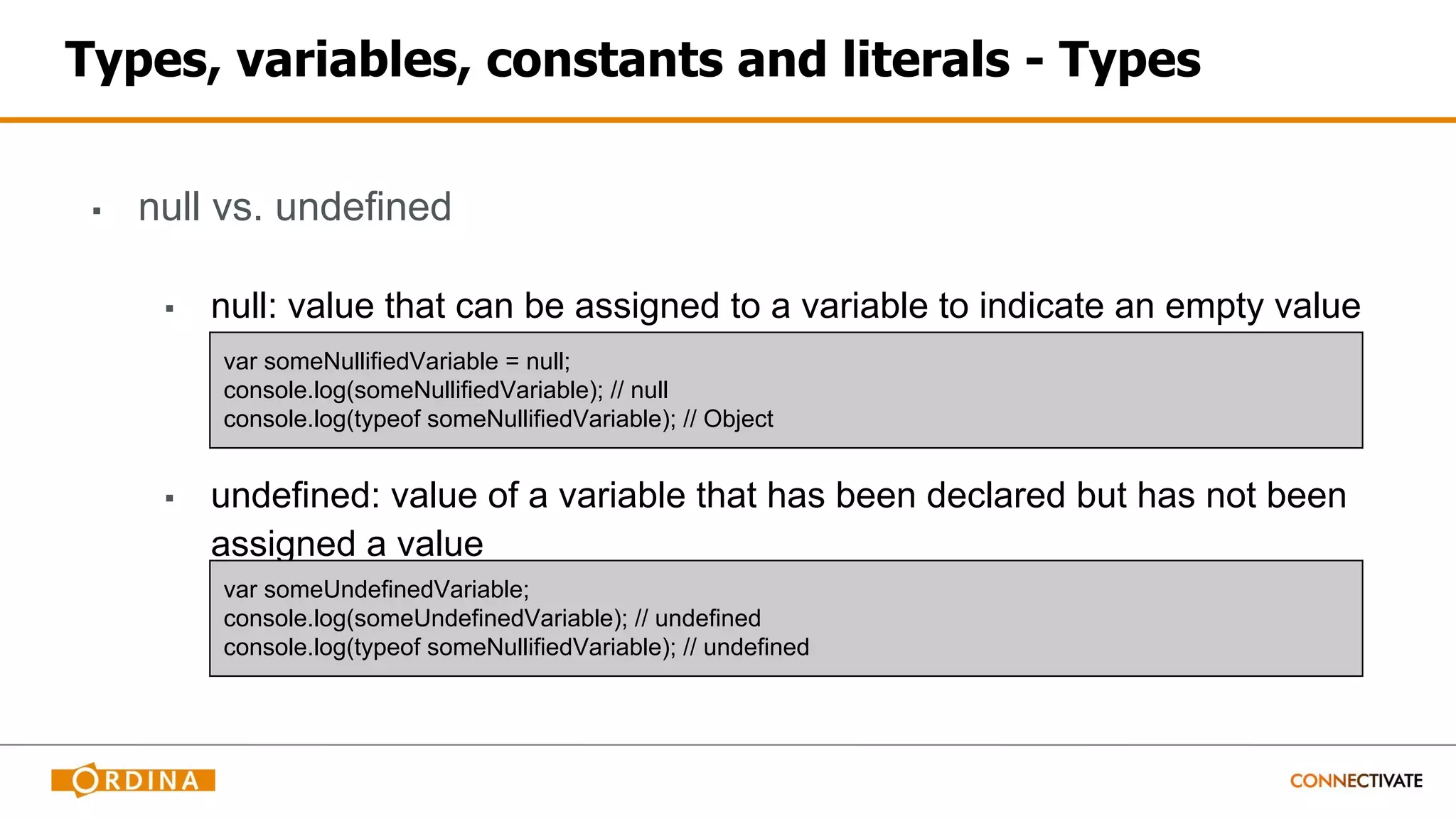
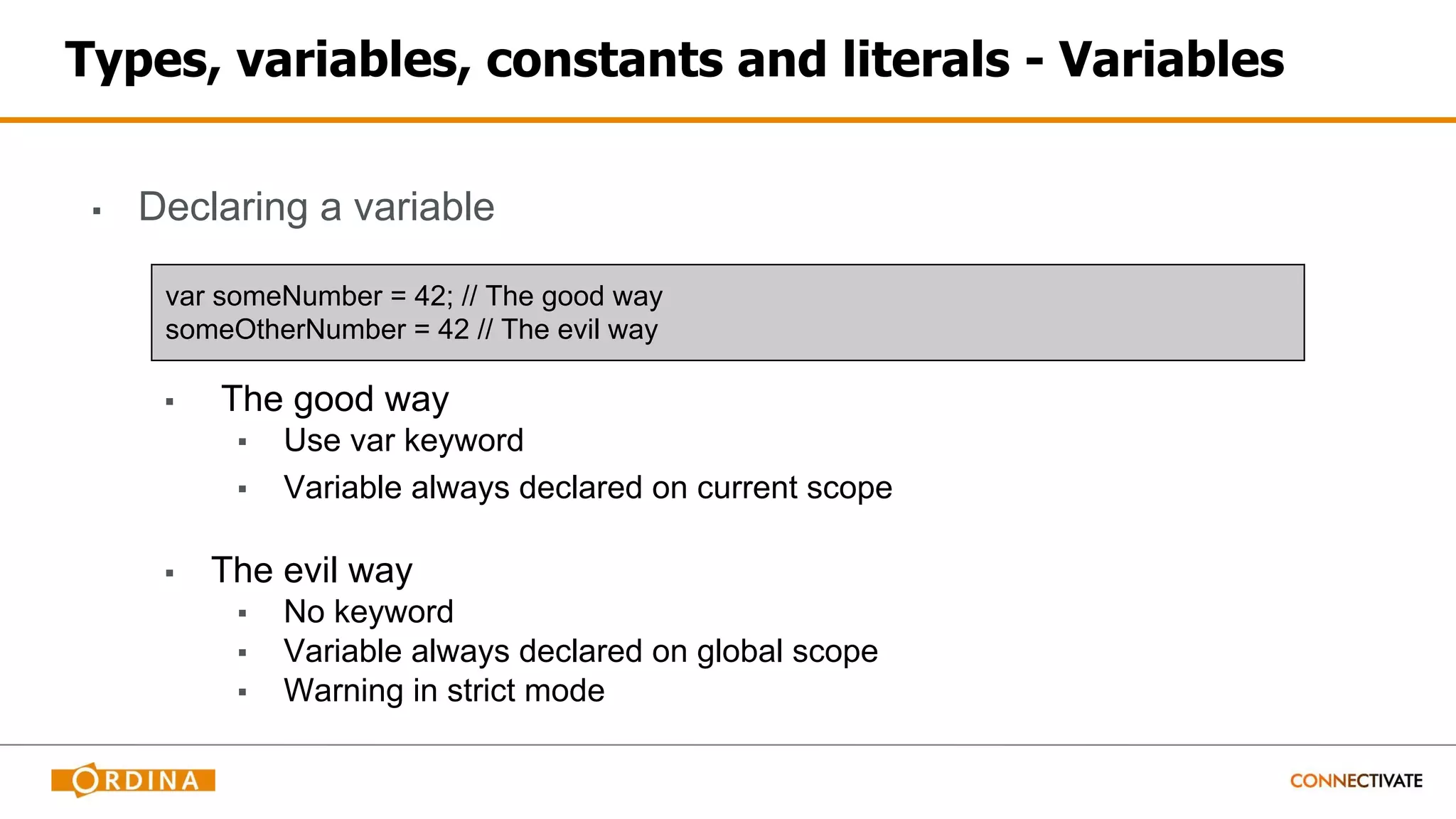
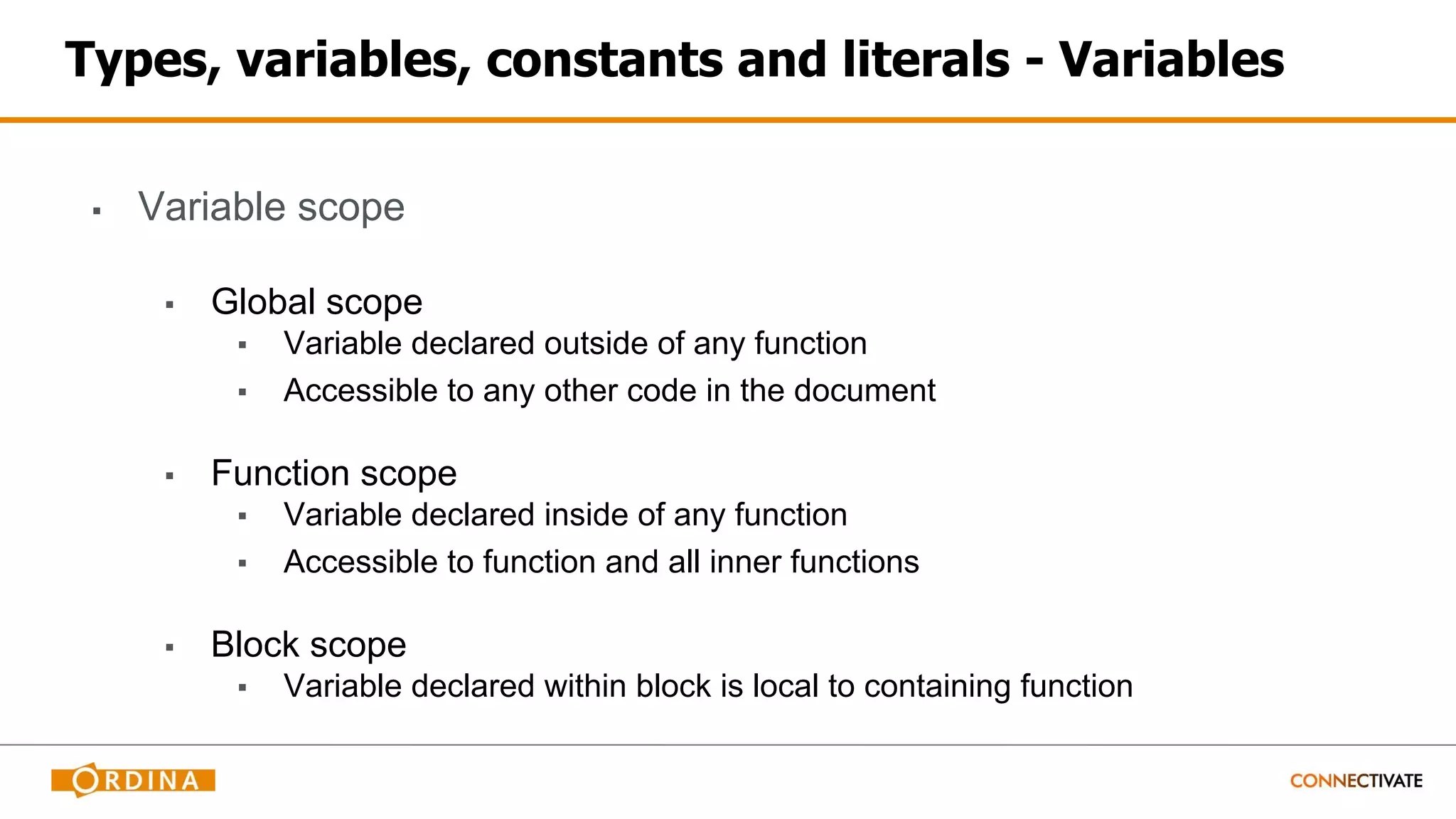
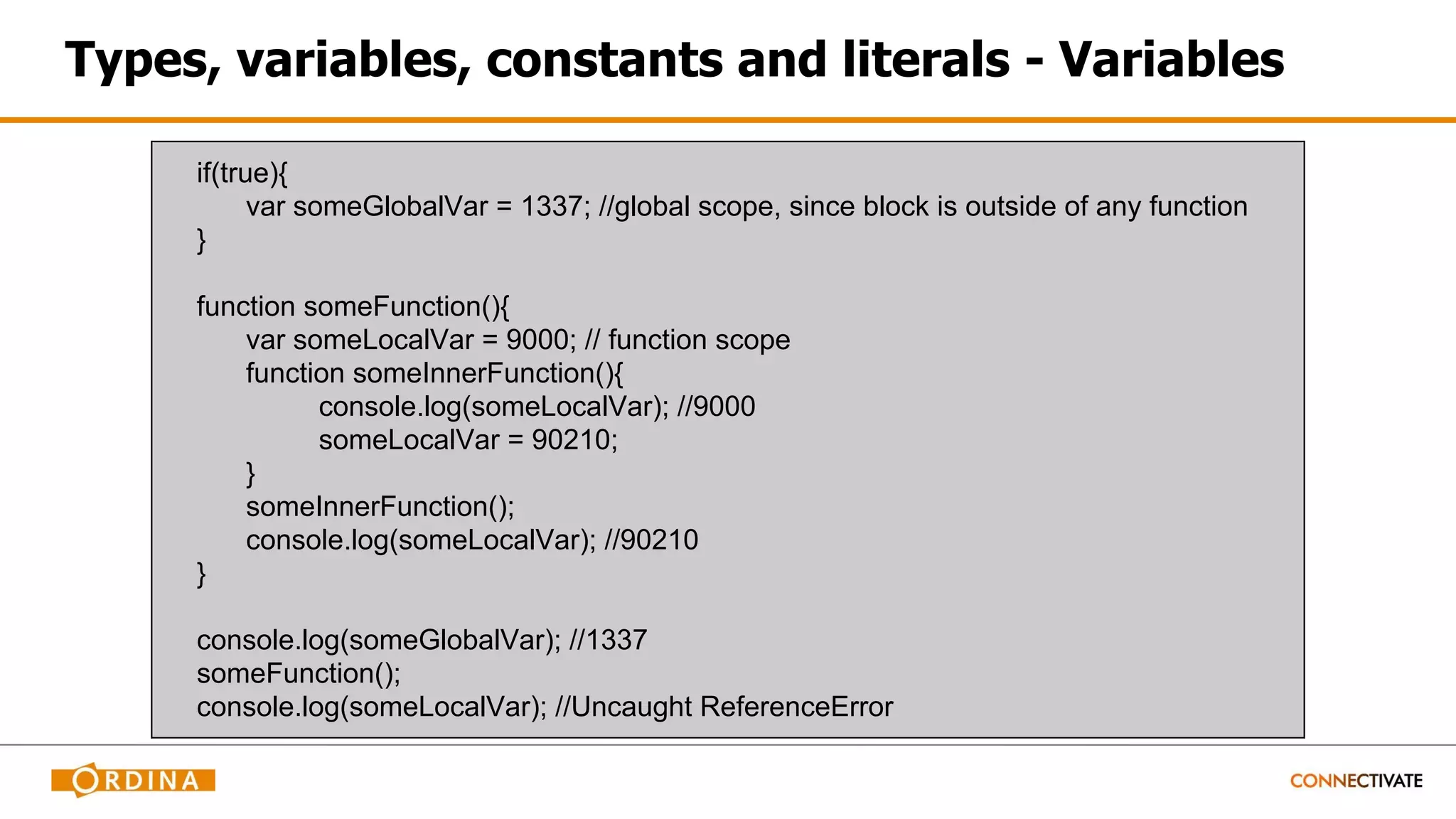
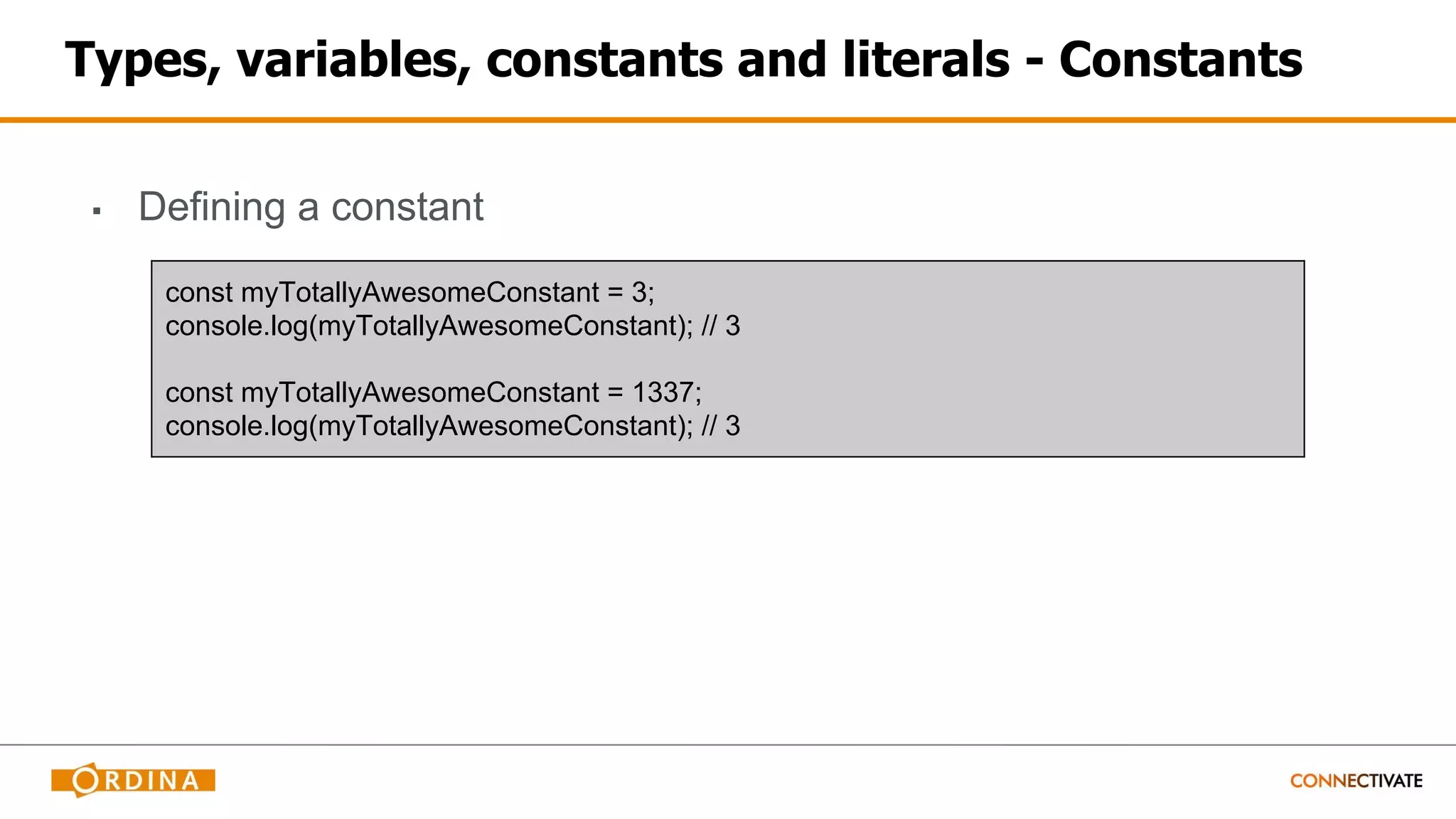
![Types, variables, constants and literals - Literals
▪ Defining literals
▪ Represent fixed values, not variables
▪ Literally providing values in code
var myAwesomeArray = [1,2,"test",true];
var myAwesomeObject = {firstMember:1,secondMember:2};
var myAwesomeBoolean = true;
var myAwesomeNumber = 1337;
var myAwesomeString = "Ordina is too awesome";
console.log(myAwesomeArray.toString()); // 1,2,test,true
console.log(myAwesomeObject); // Object {firstMember: 1, secondMember: 2}
console.log(myAwesomeBoolean); // true
console.log(myAwesomeNumber); // 1337
console.log(myAwesomeString); // Ordina is too awesome](https://image.slidesharecdn.com/javascript-basics-and-best-practices-160105093411/75/JavaScript-Basics-and-Best-Practices-CC-FE-UX-20-2048.jpg)
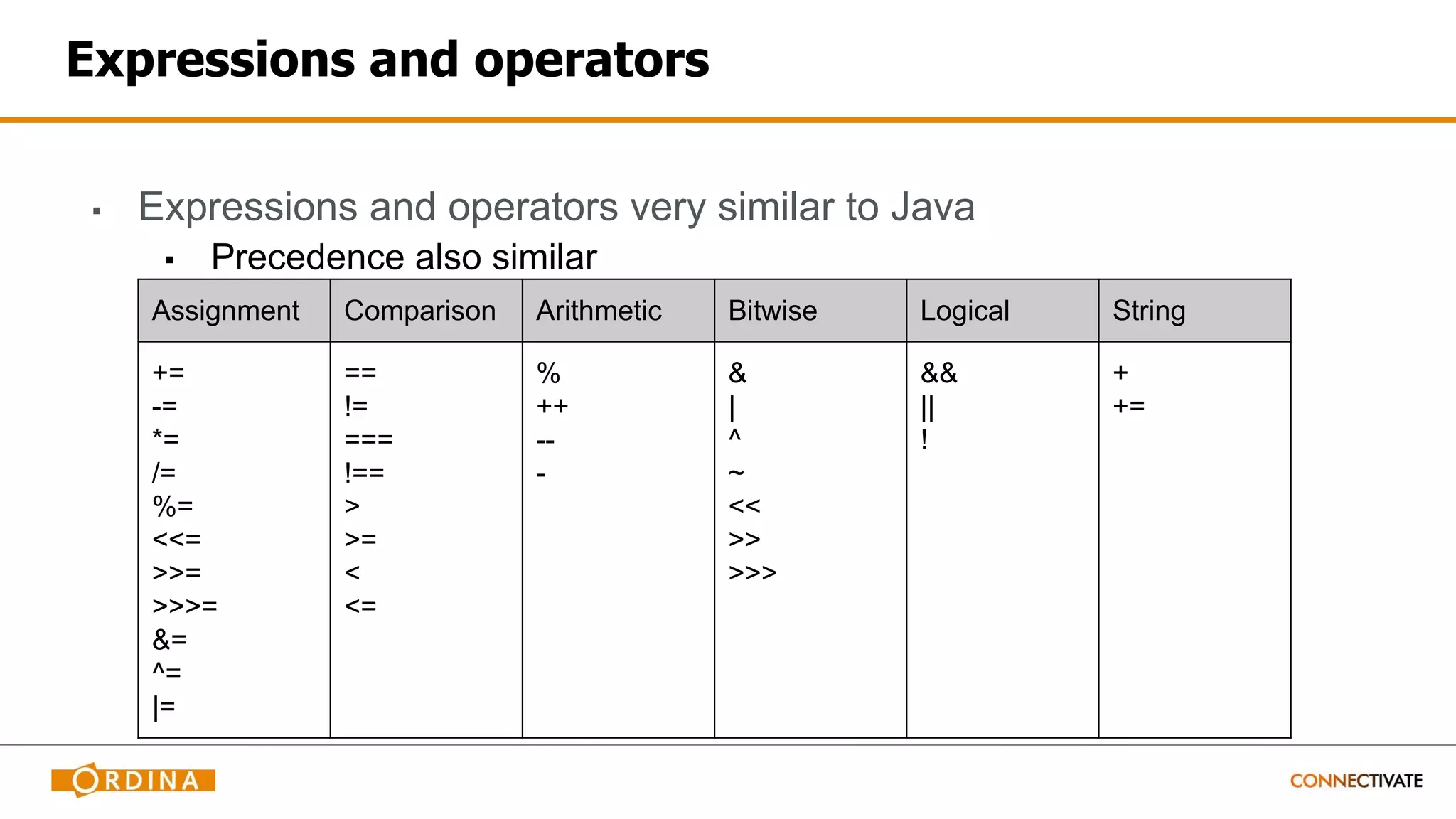
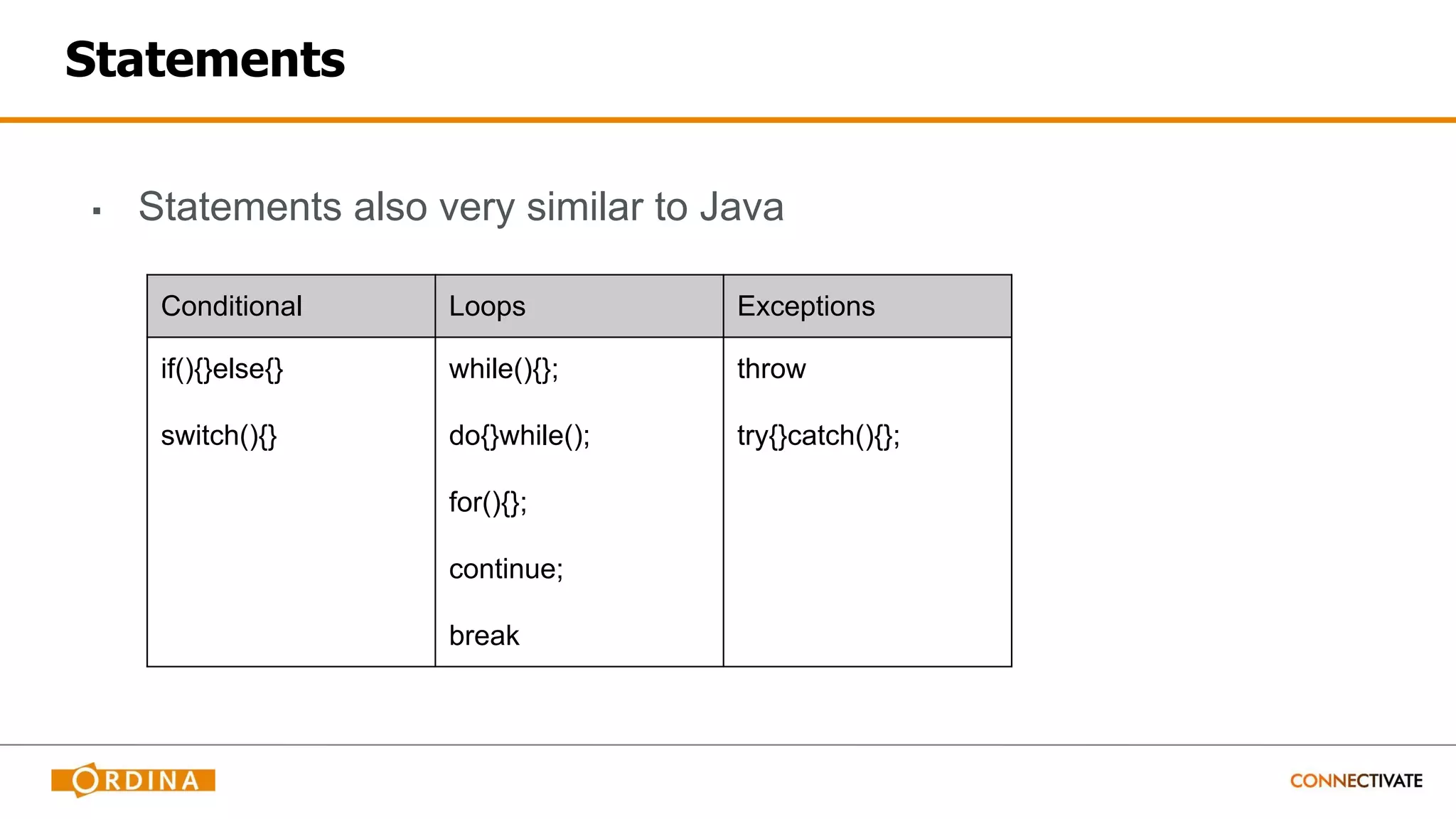
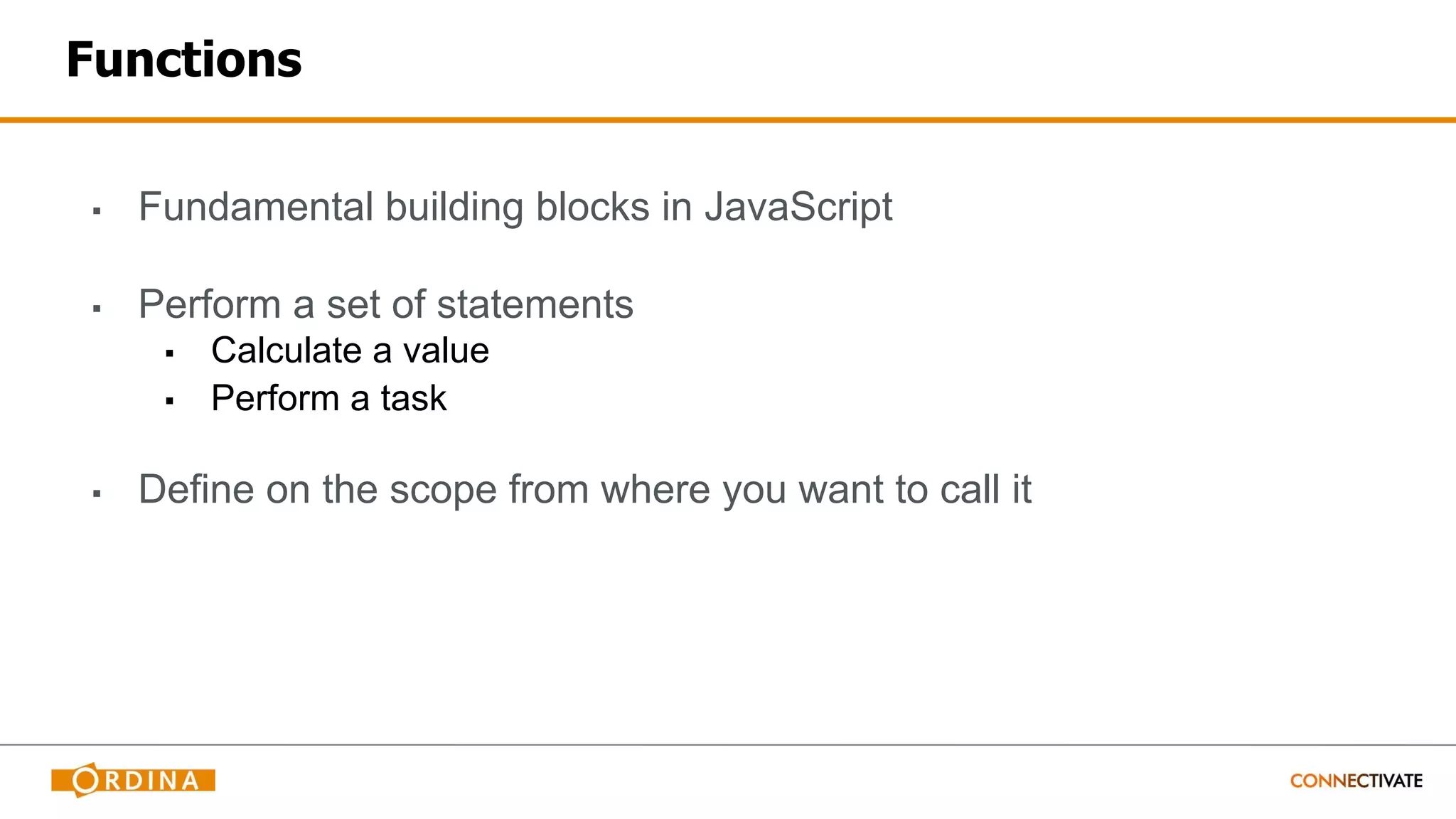
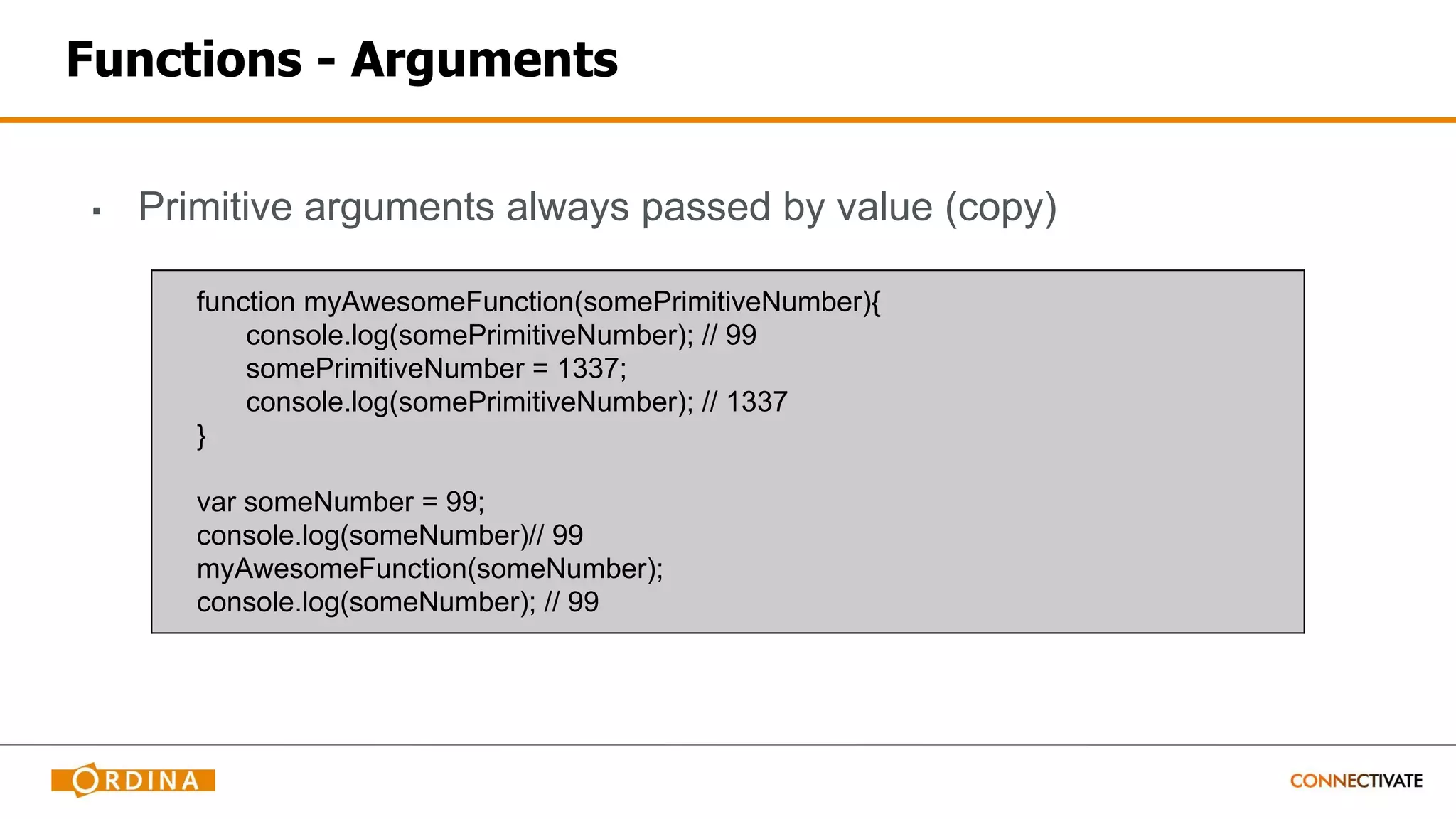
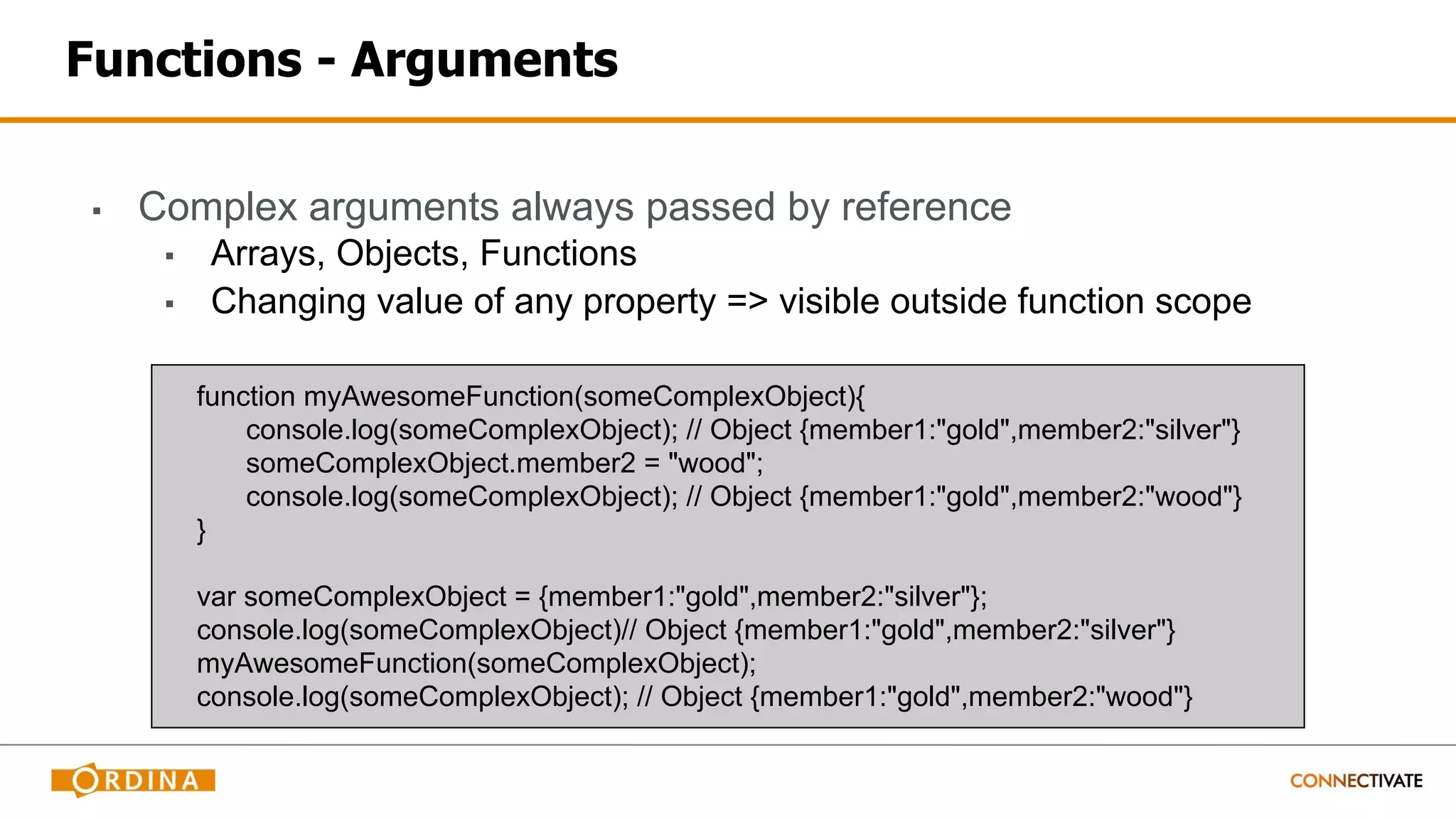
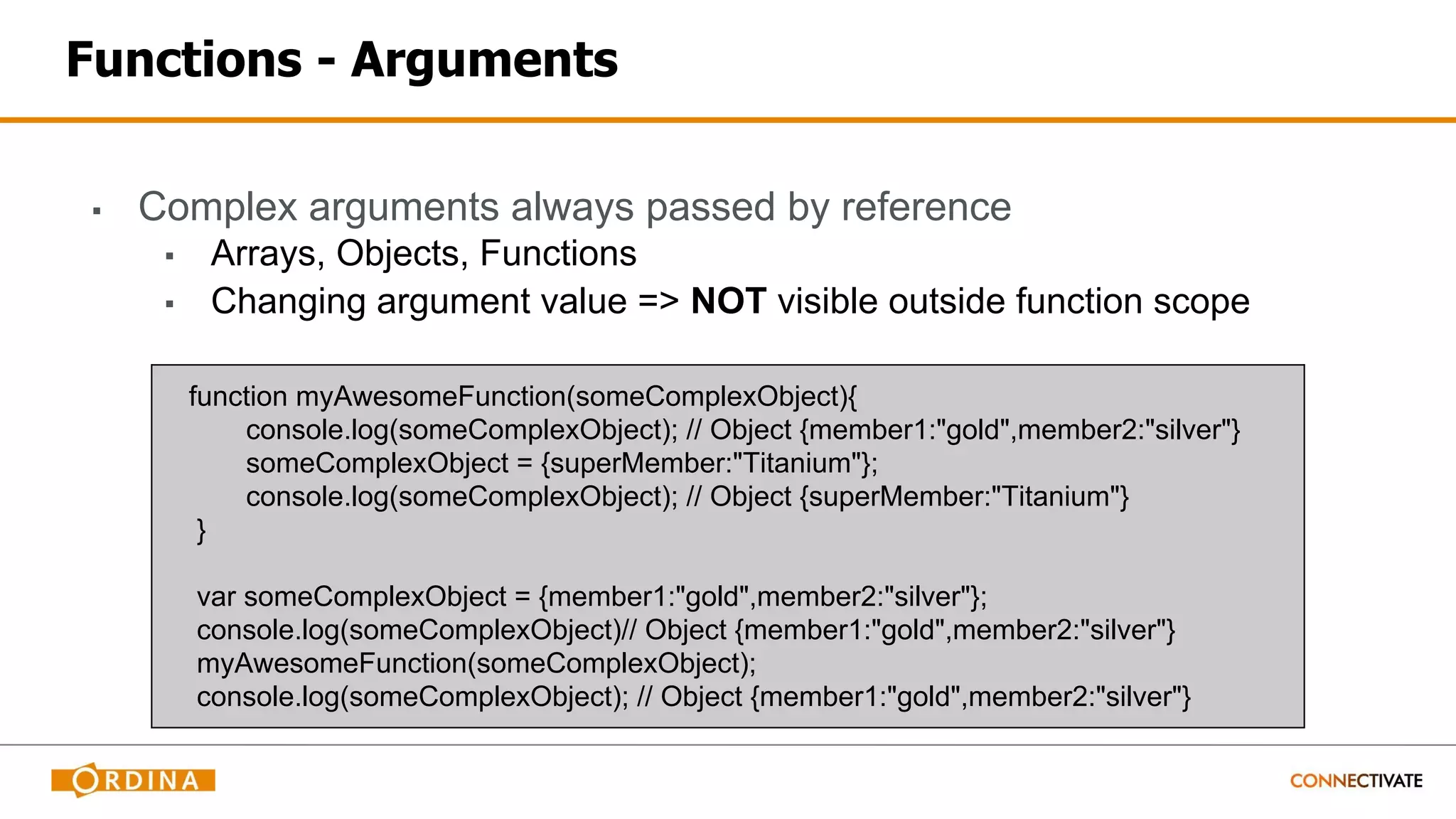
![Functions - Multiple Arguments
▪ Array-like object to iterate through arguments
▪ Can pass any number of arguments (overloading-ish)
function myAwesomerFunction(firstNumber){
var result = "" + firstNumber;
for(var i = 1; i < arguments.length; i++) {
result += "," + arguments[i];
}
console.log(result);
}
var myFirstNumber = 99;
myAwesomerFunction(myFirstNumber); // 99
myAwesomerFunction(myFirstNumber,100); // 99,100
myAwesomerFunction(myFirstNumber,100,101); // 99,100,101](https://image.slidesharecdn.com/javascript-basics-and-best-practices-160105093411/75/JavaScript-Basics-and-Best-Practices-CC-FE-UX-27-2048.jpg)
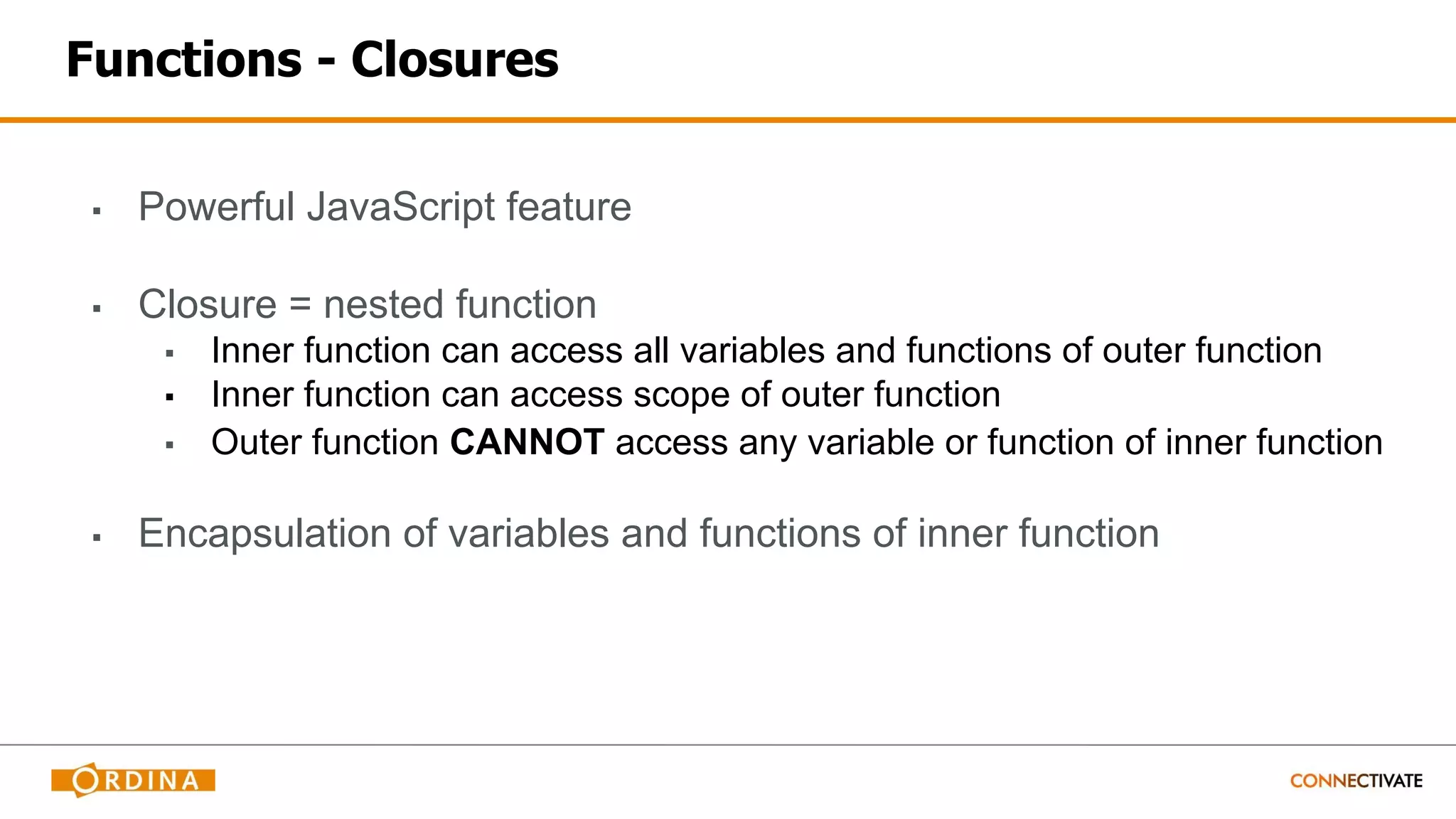
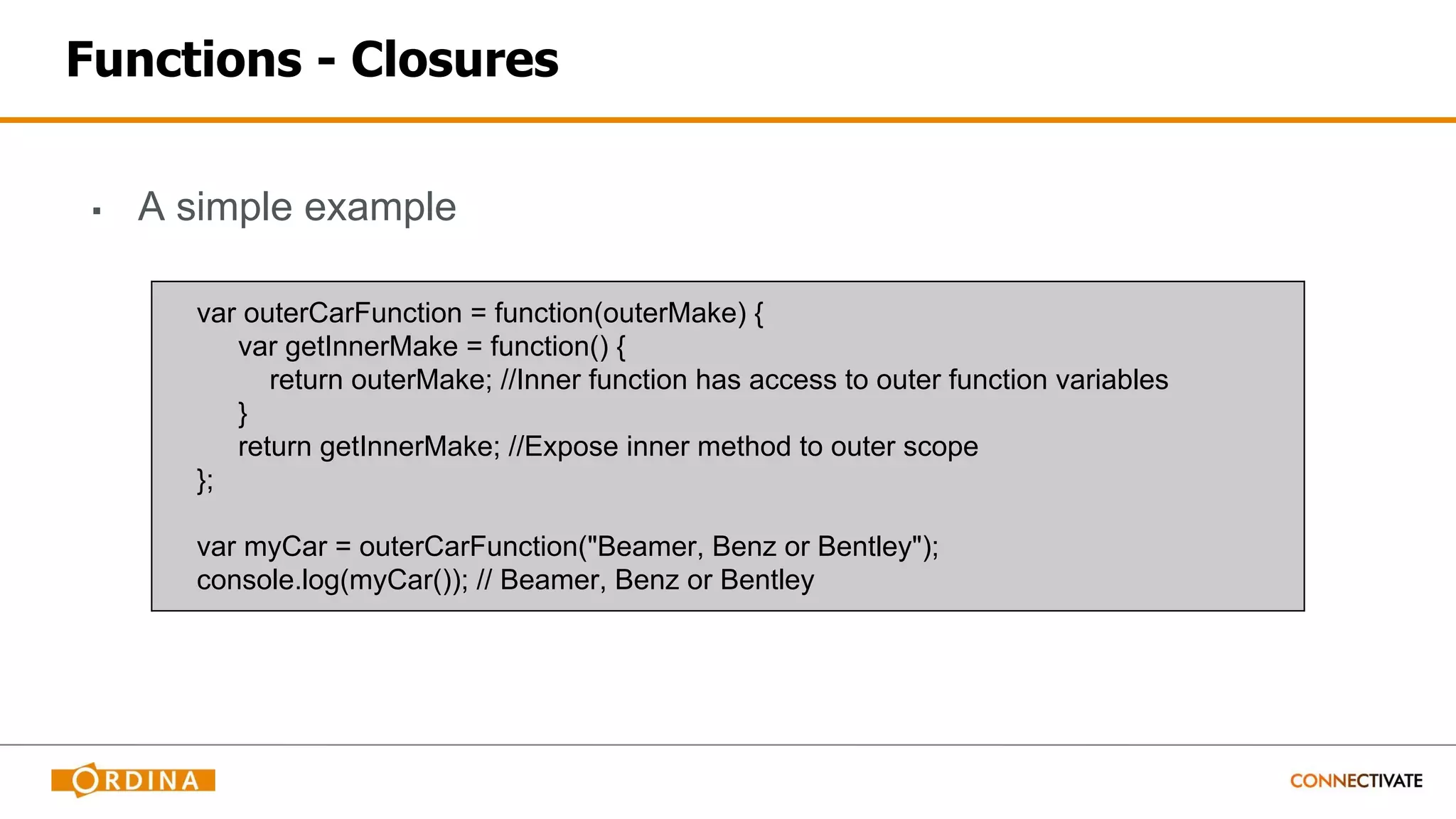
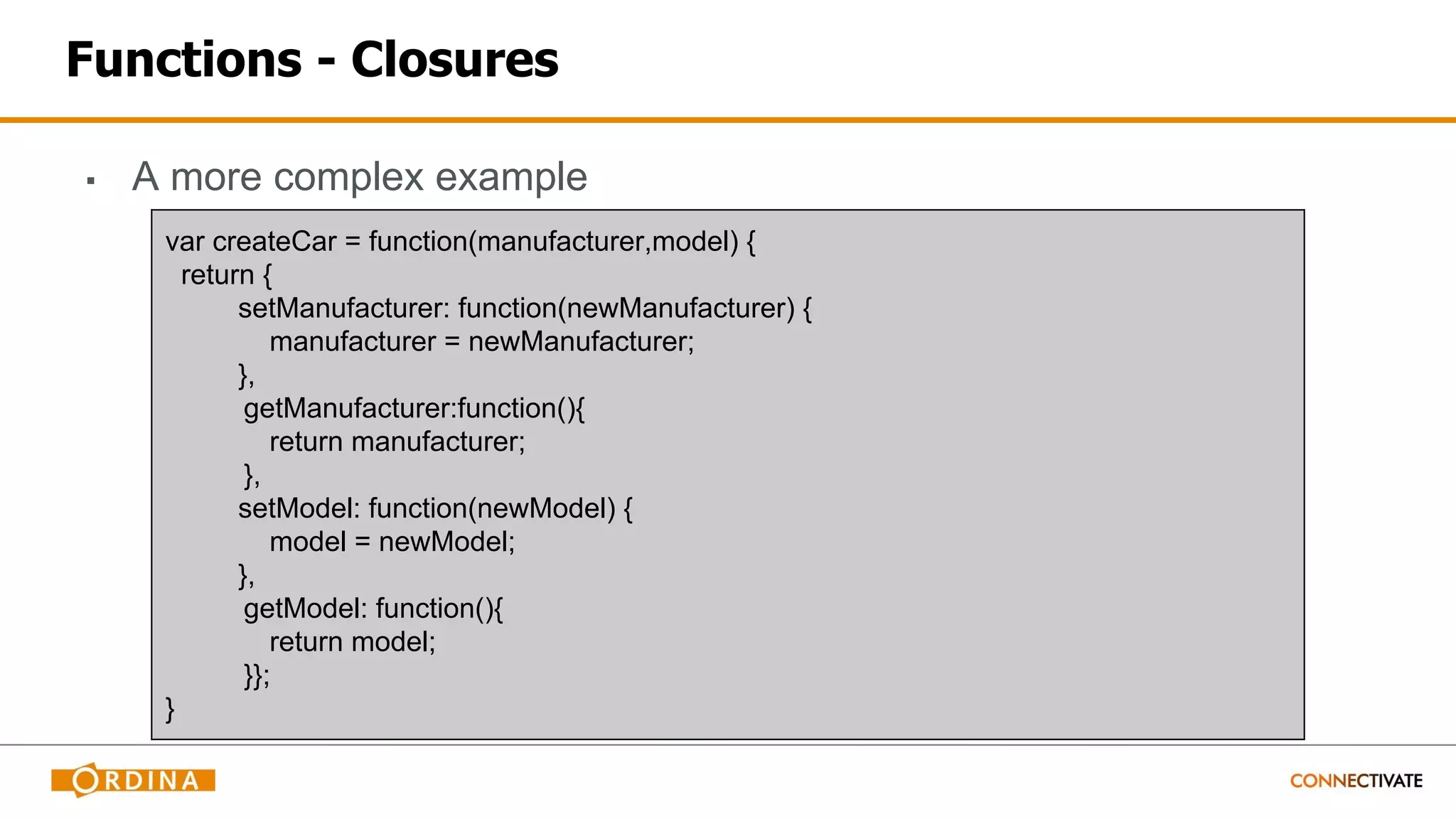
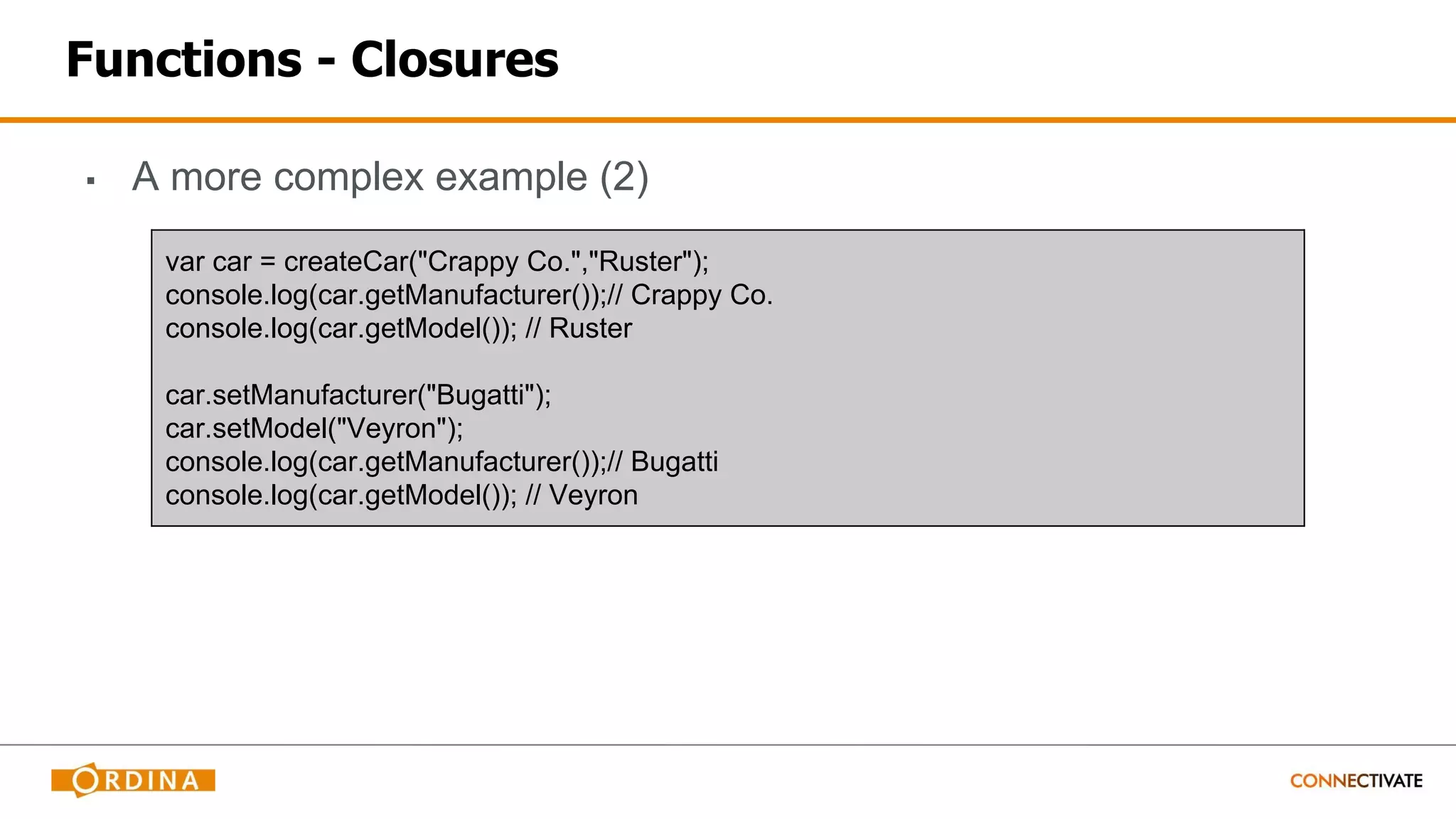
![Objects
▪ JavaScript is designed to be Objects-based
▪ Objects can have properties
▪ Objects can have methods
▪ Use predefined objects or create your own
▪ Objects are also associative arrays (basic maps)
var movie = new Object(); // or var movie = {};
movie.title = "Sharknado";
movie.rating = "Utter crap";
var movie = new Object(); // or var movie = {};
movie["title"] = "Sharknado";
movie["rating"] = "Utter crap";](https://image.slidesharecdn.com/javascript-basics-and-best-practices-160105093411/75/JavaScript-Basics-and-Best-Practices-CC-FE-UX-32-2048.jpg)
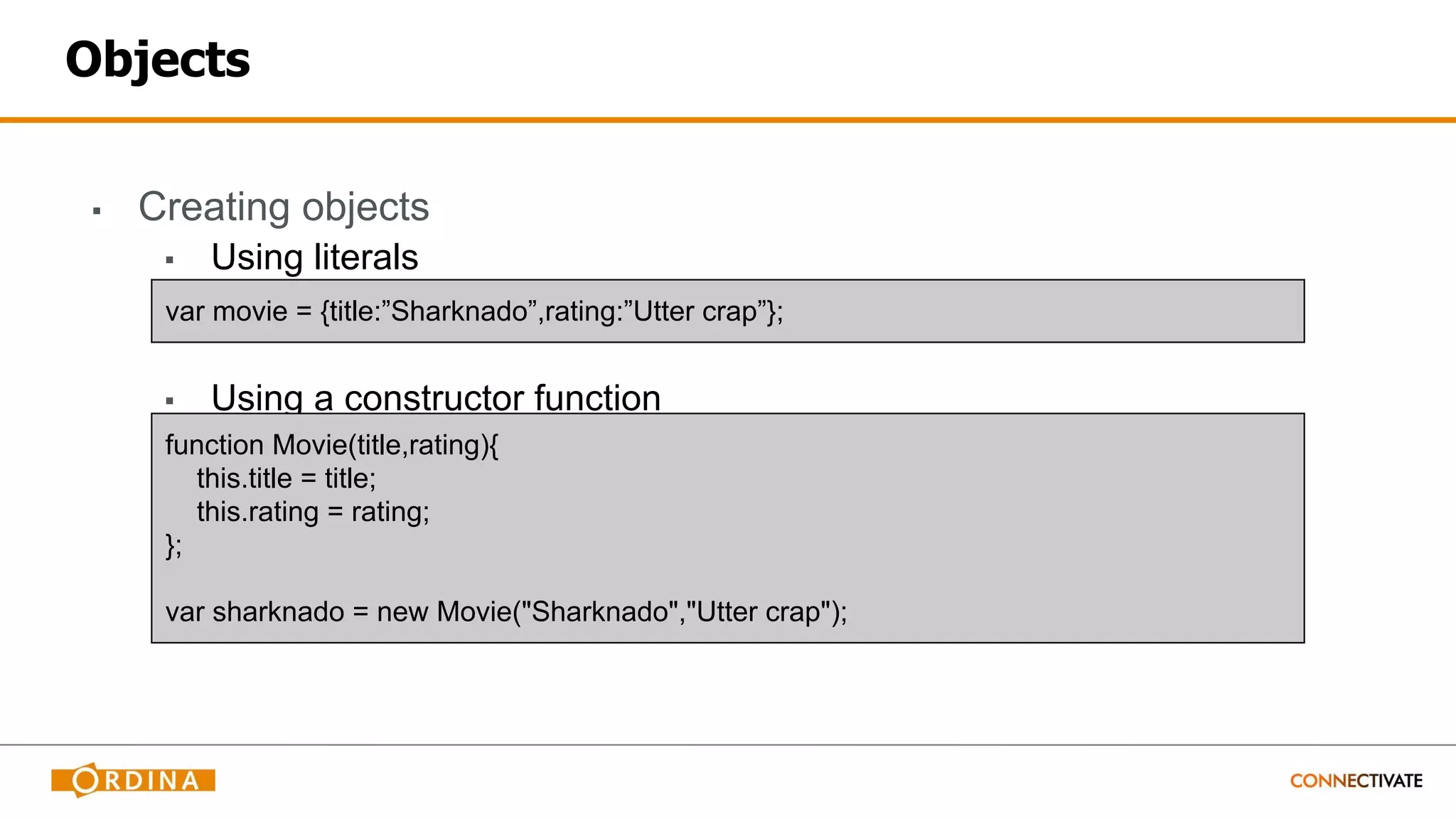
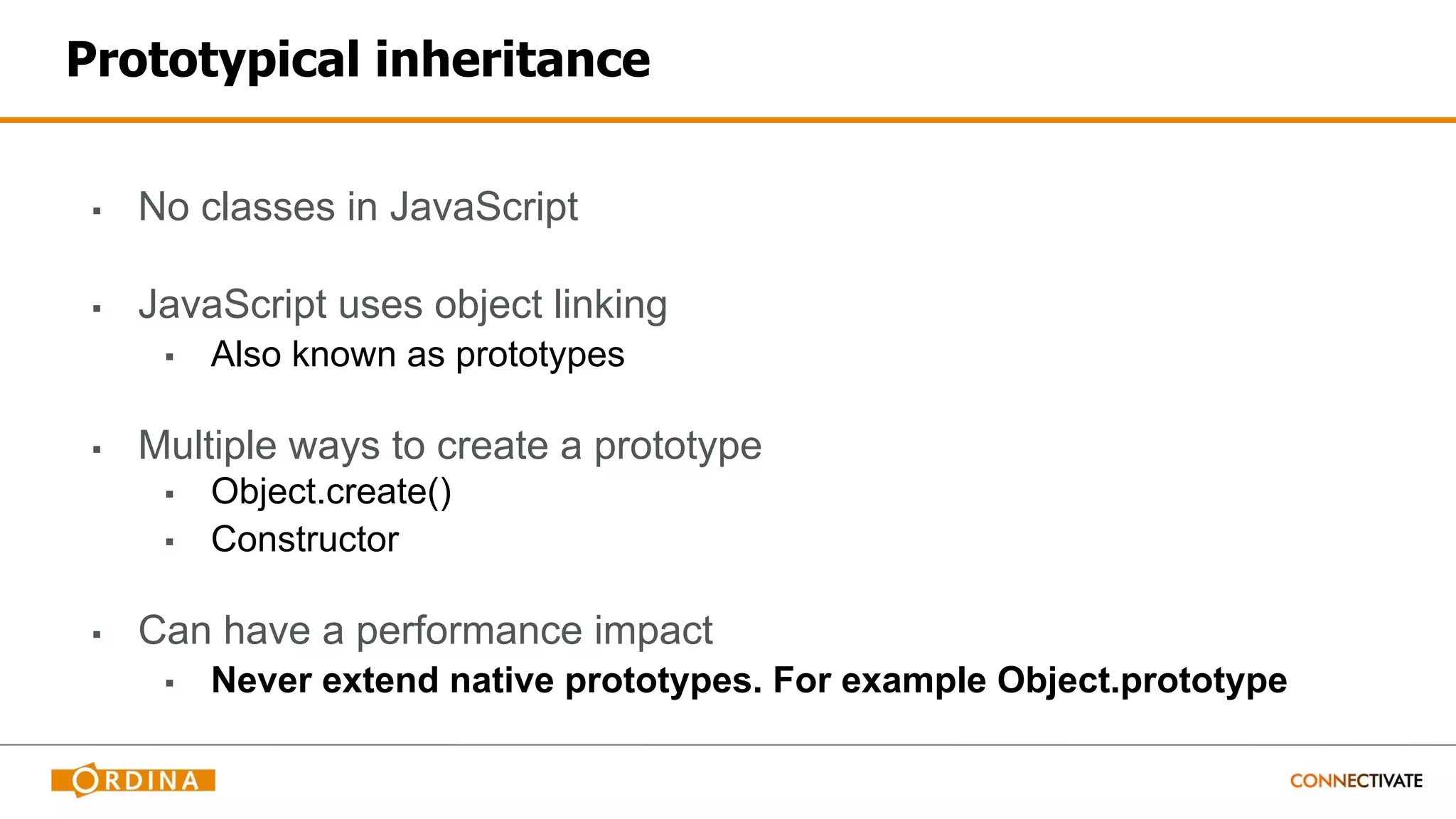

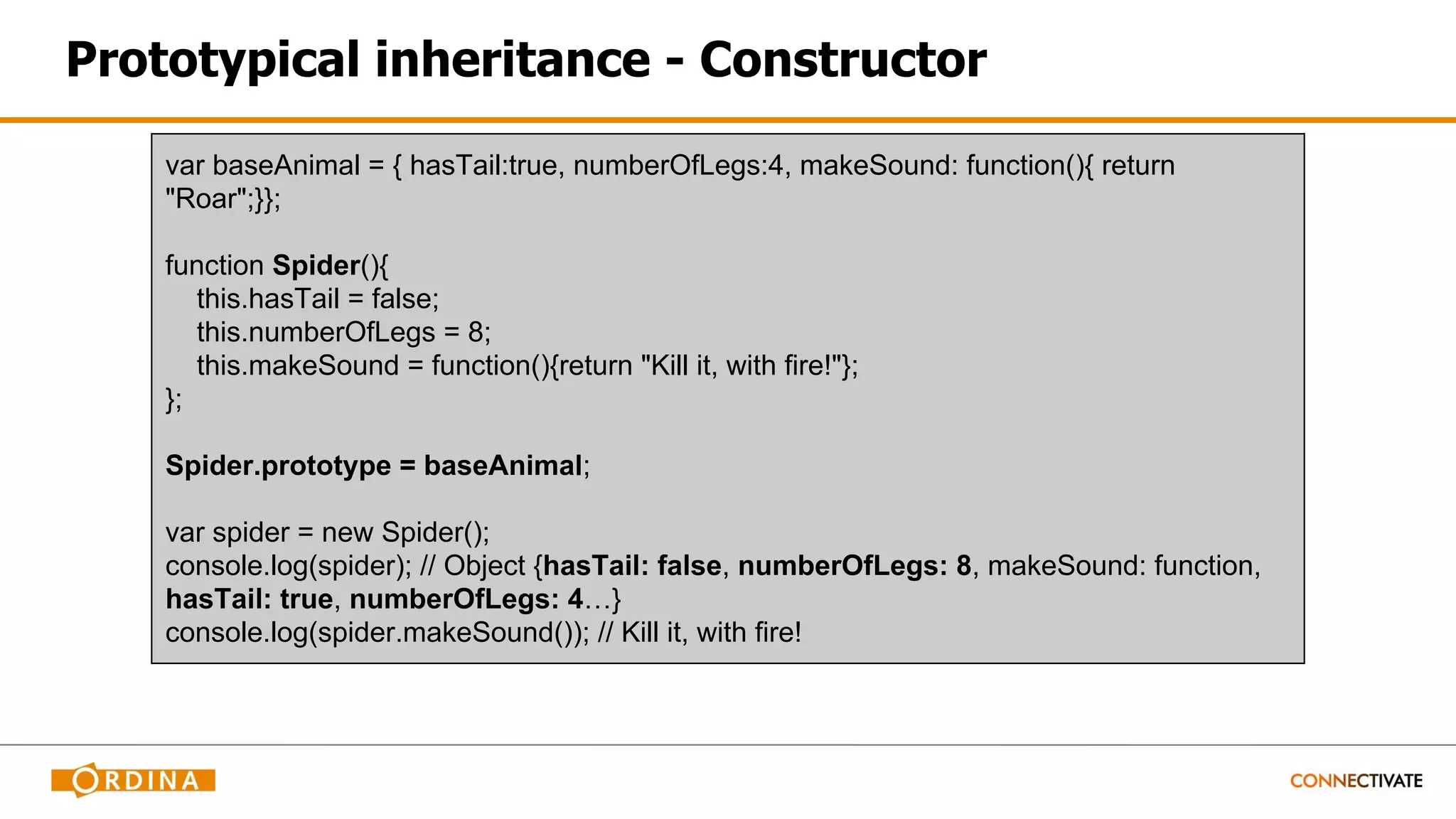
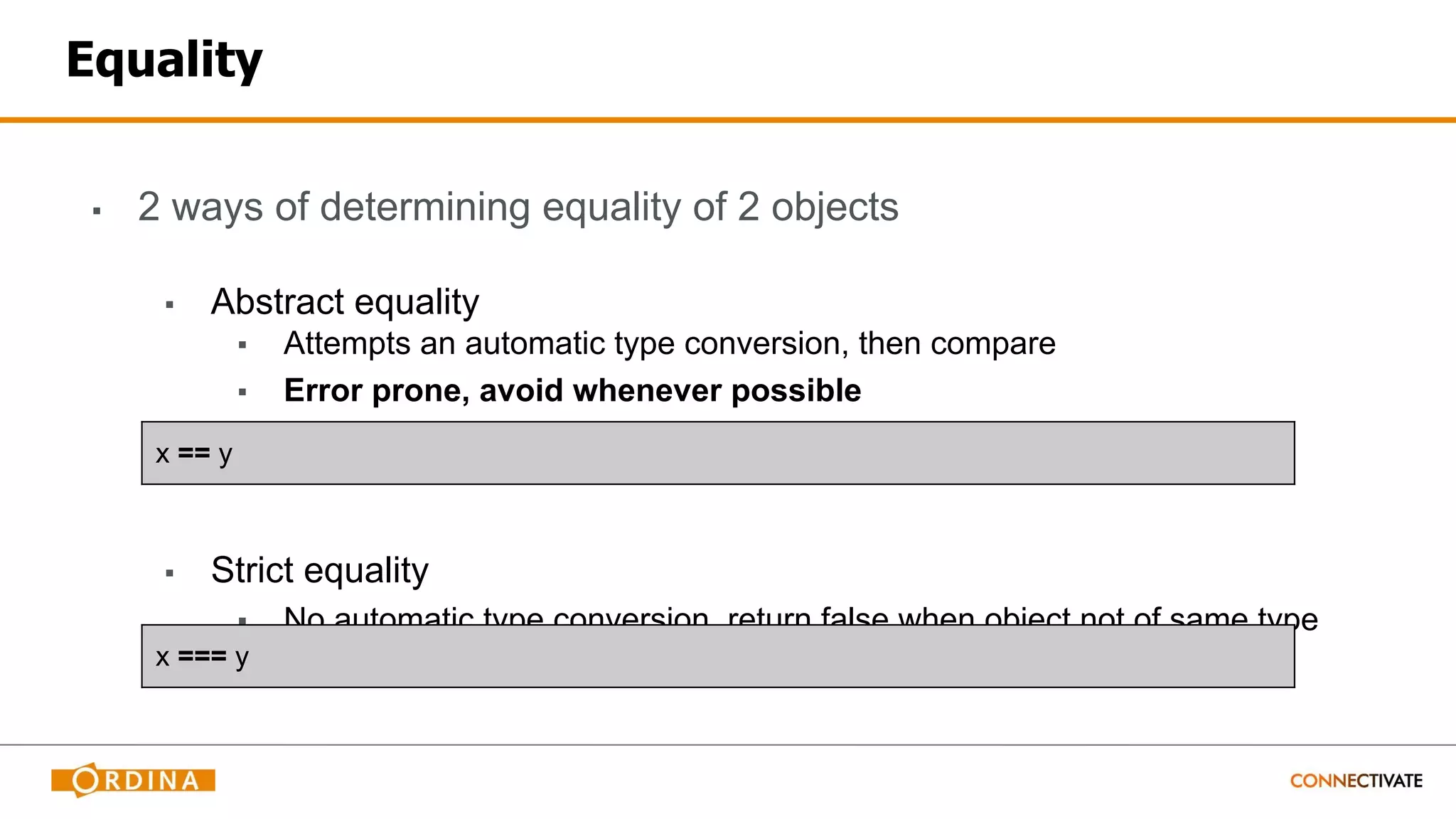
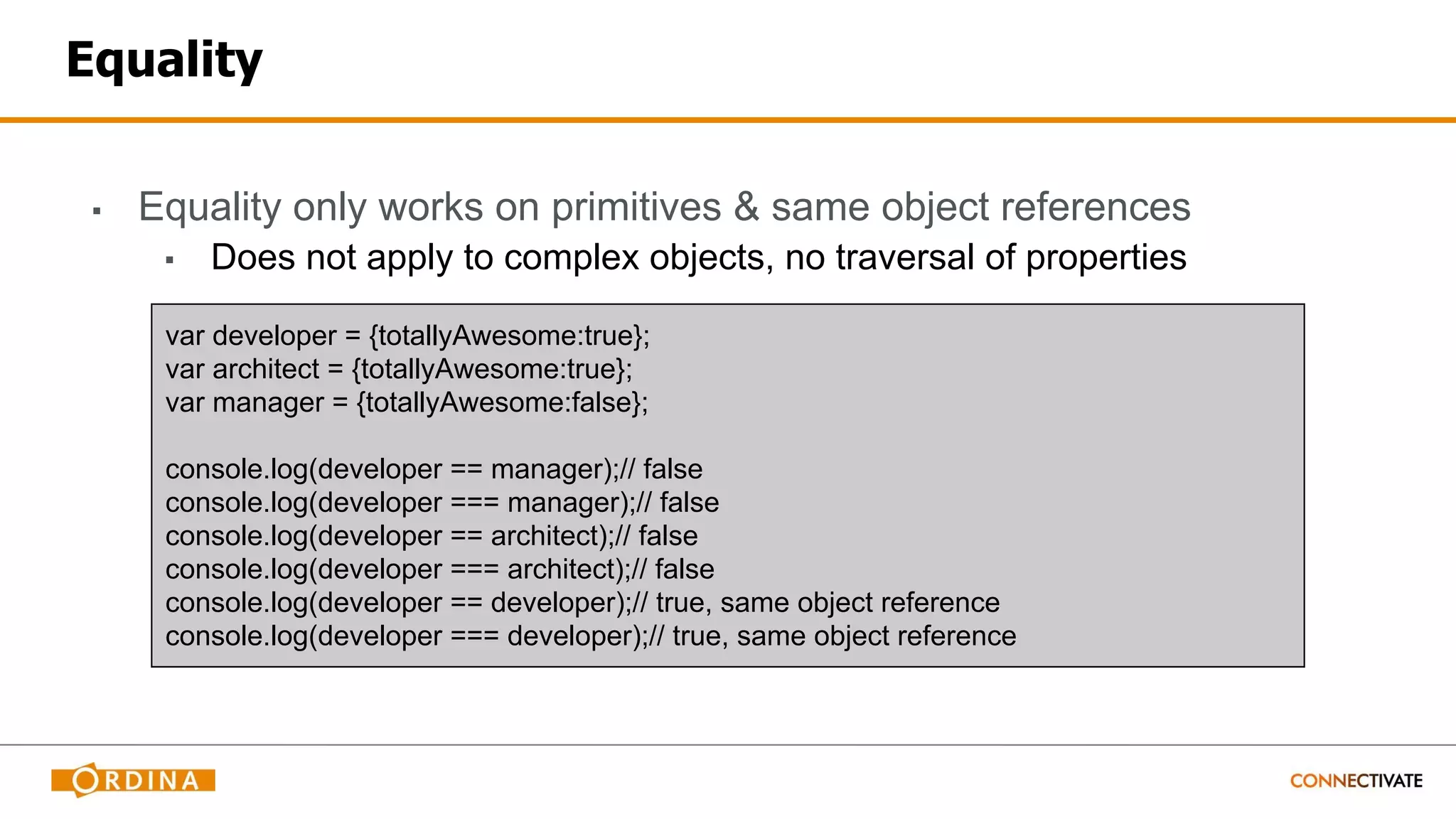
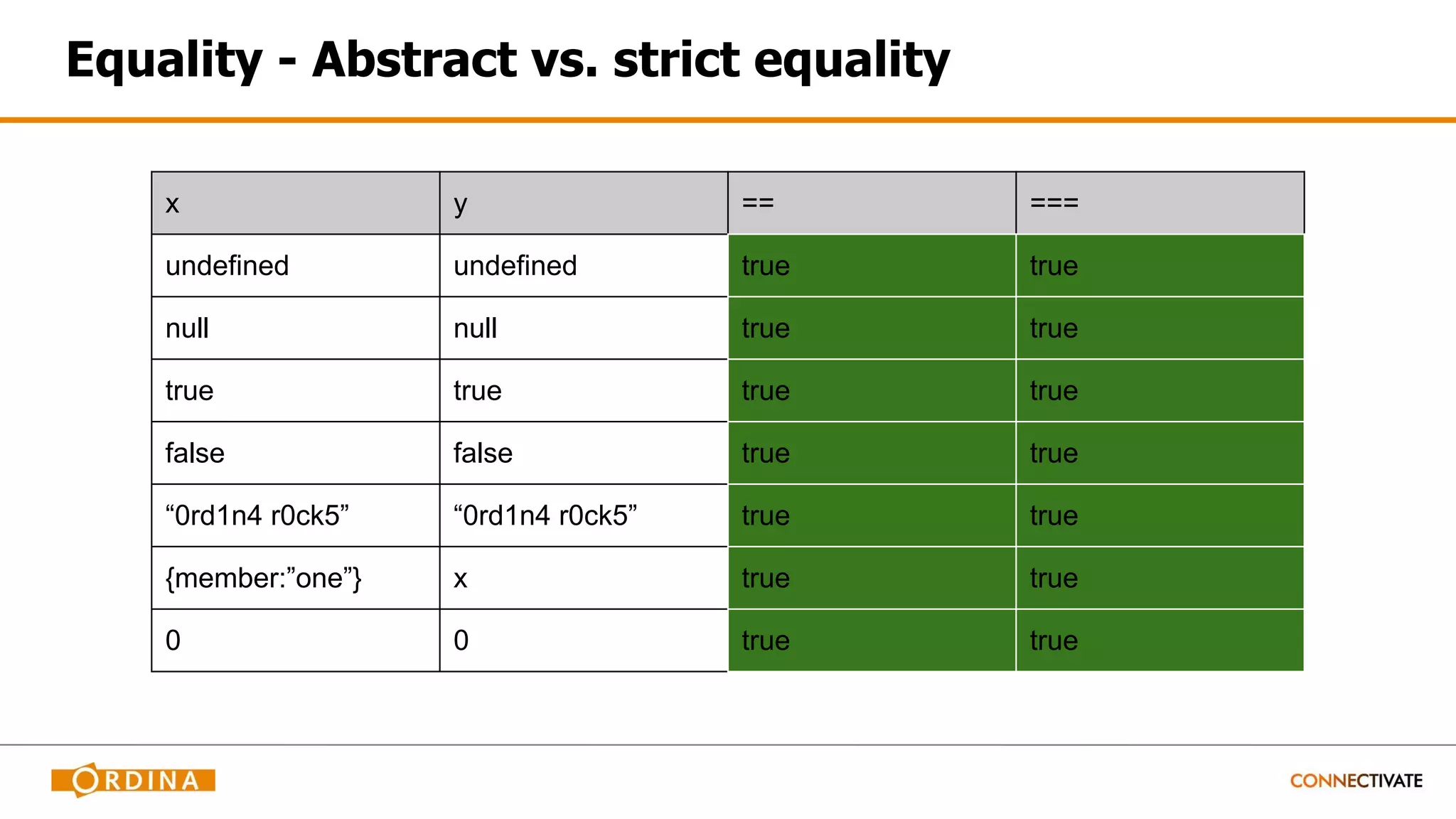
![Equality - Abstract vs. strict equality (2)
x y == ===
0 false true false
“” false true false
“” 0 true false
“0” 0 true false
“17” 17 true false
[1,2] “1,2” true false
null undefined true false](https://image.slidesharecdn.com/javascript-basics-and-best-practices-160105093411/75/JavaScript-Basics-and-Best-Practices-CC-FE-UX-40-2048.jpg)
